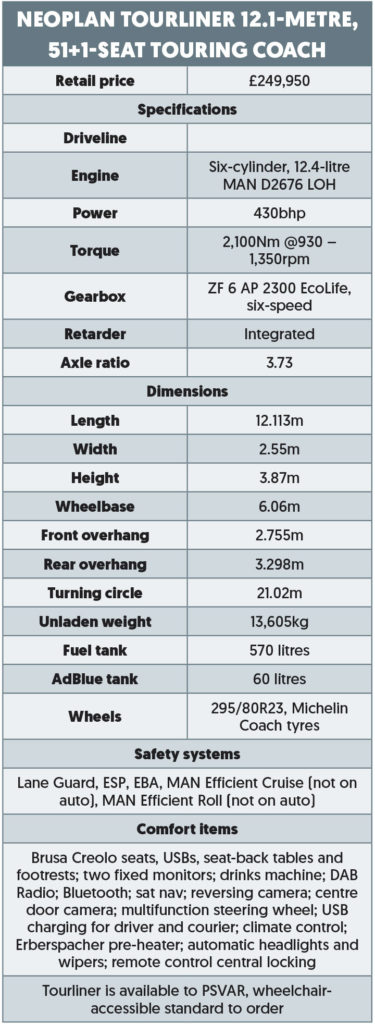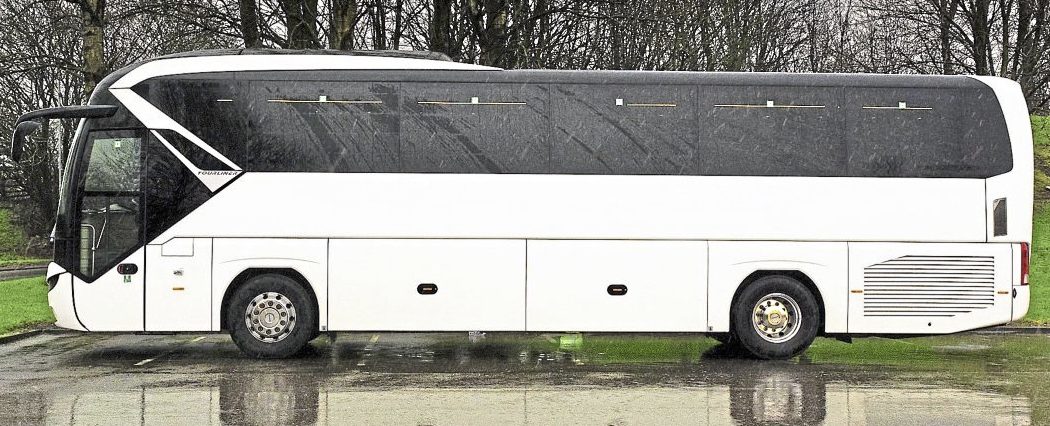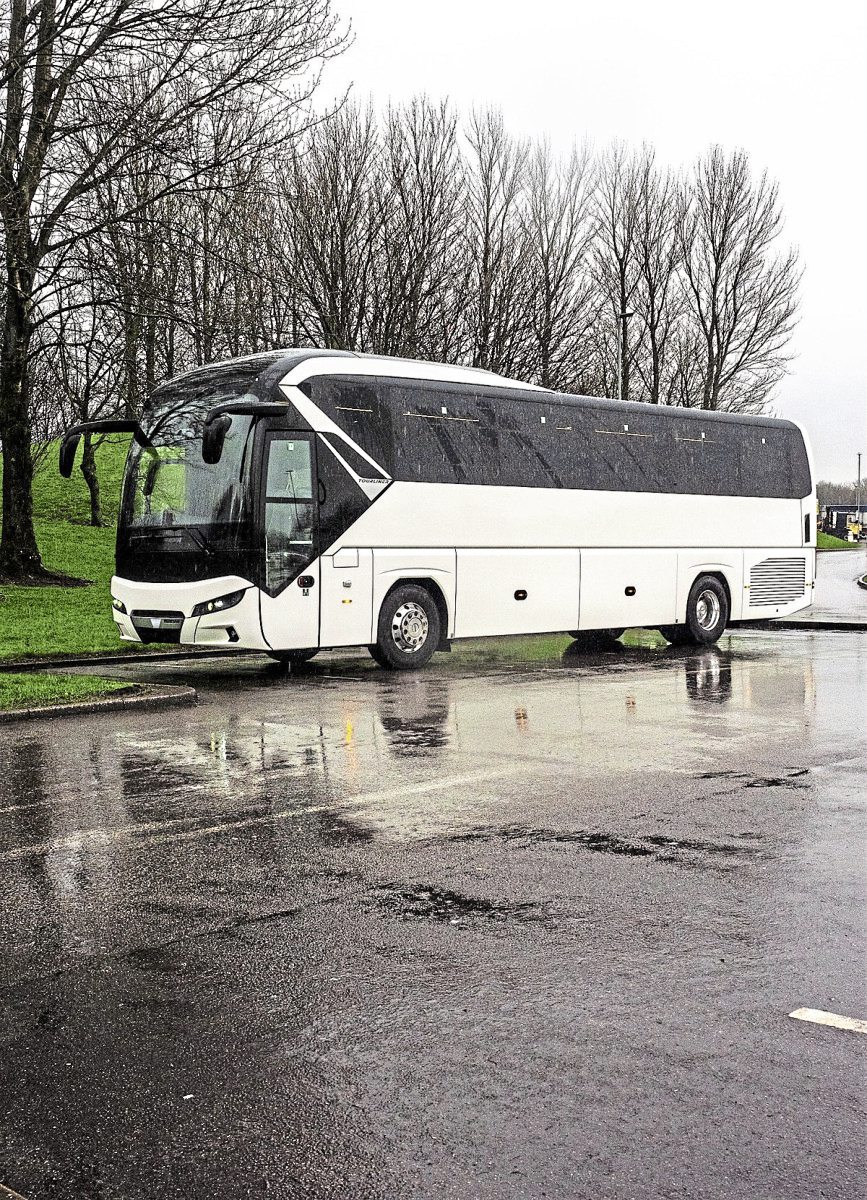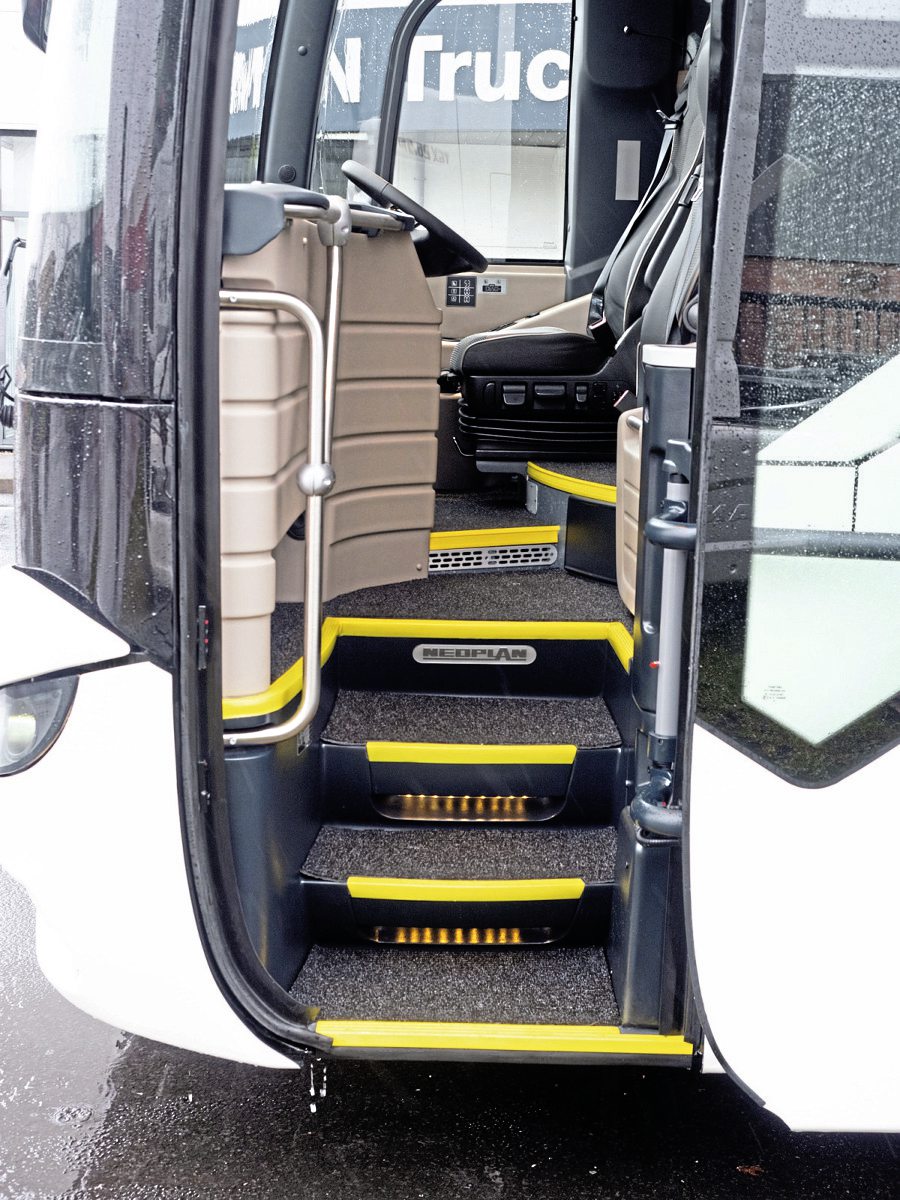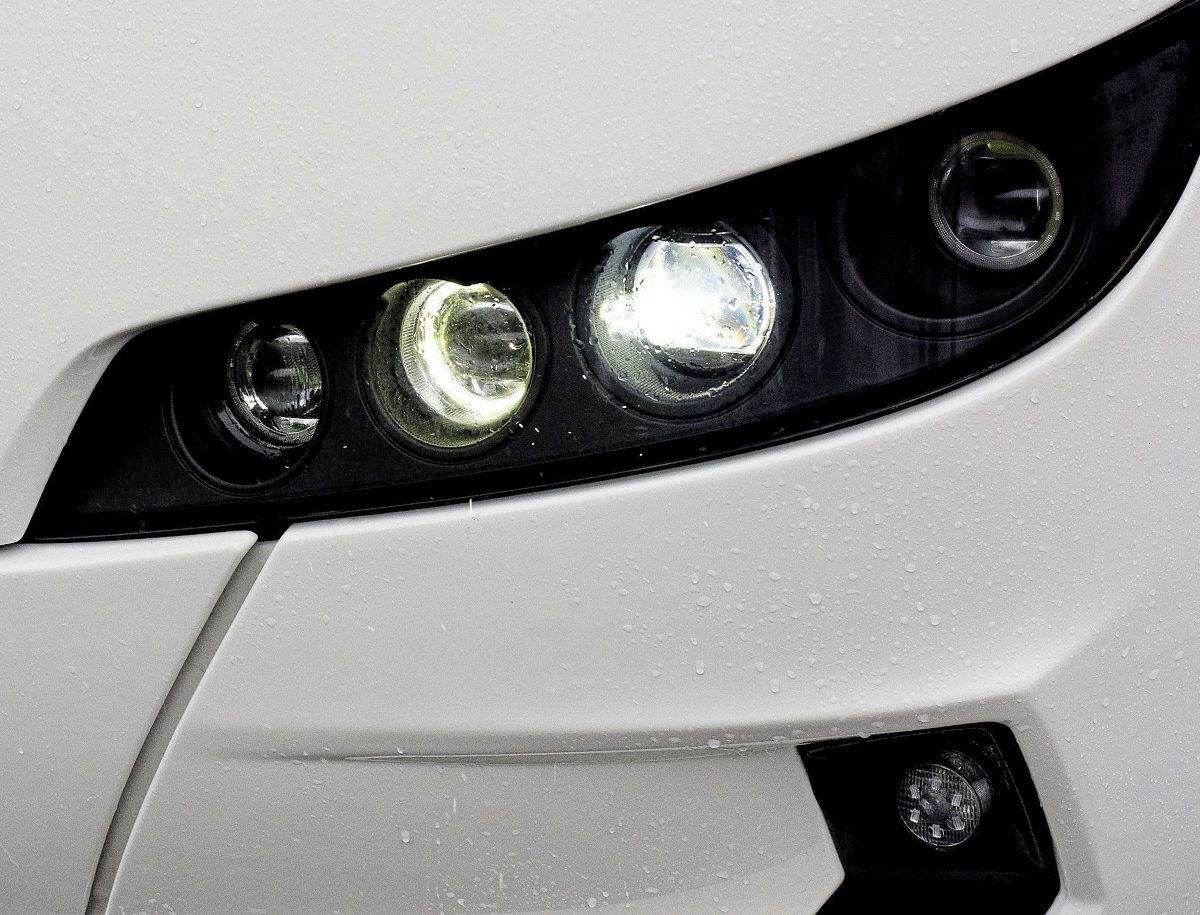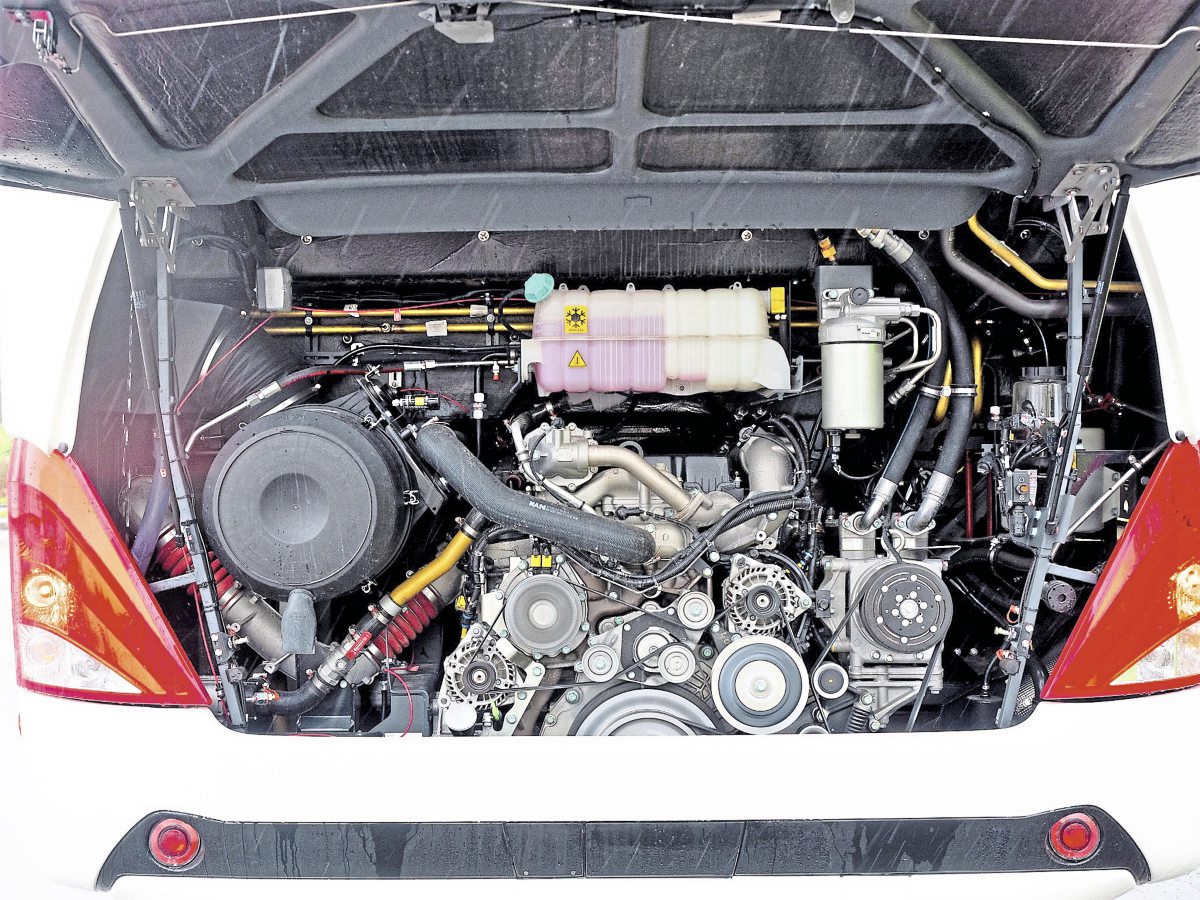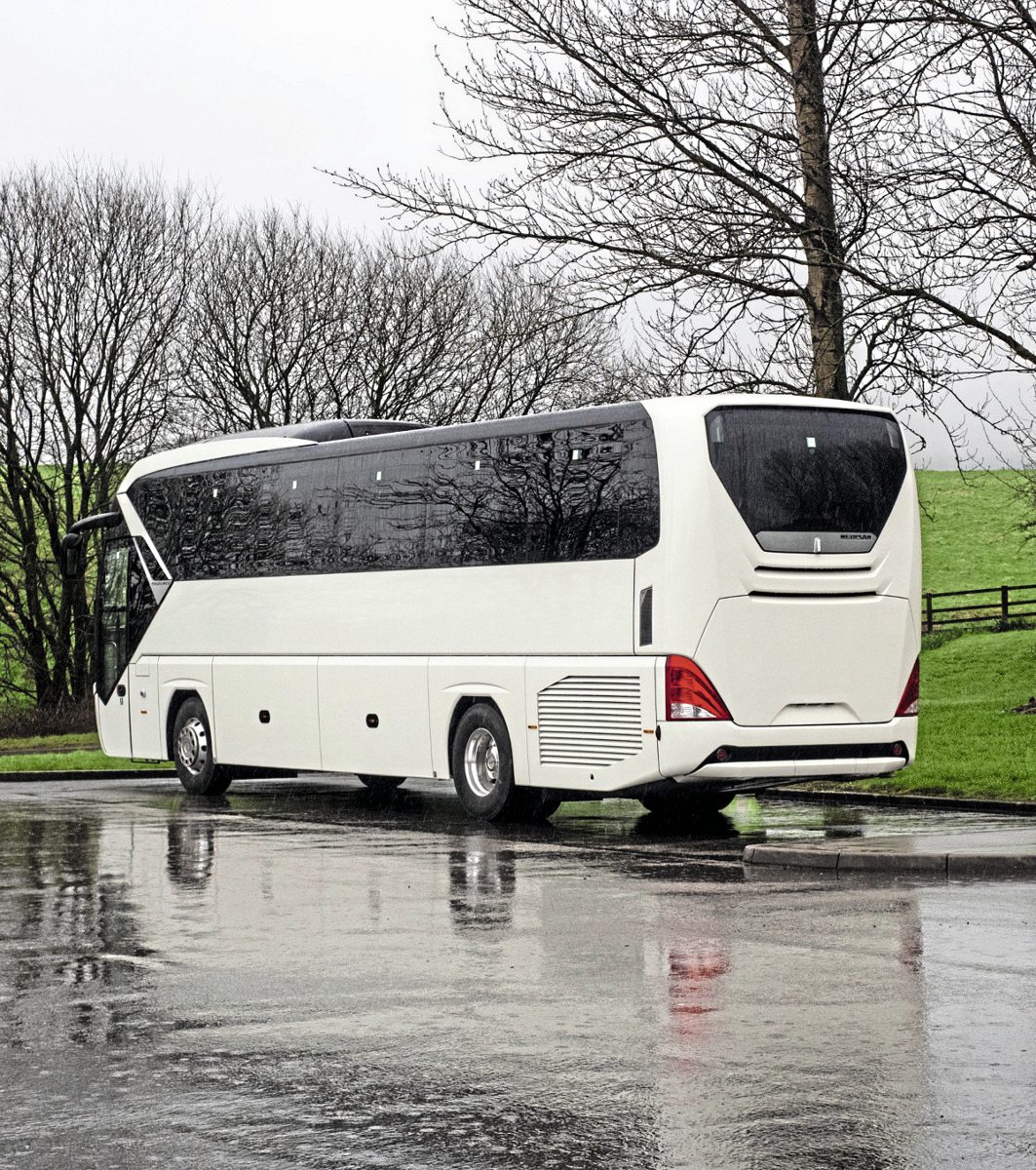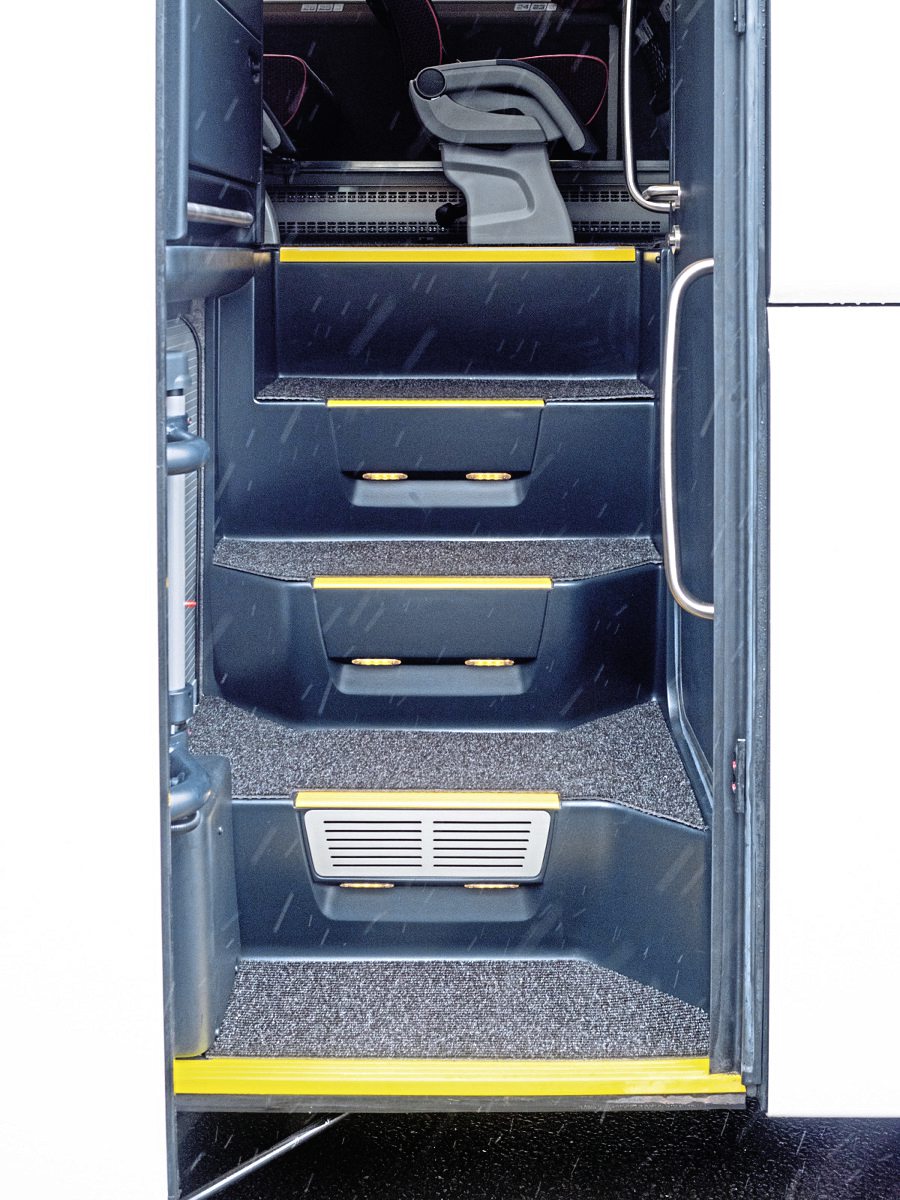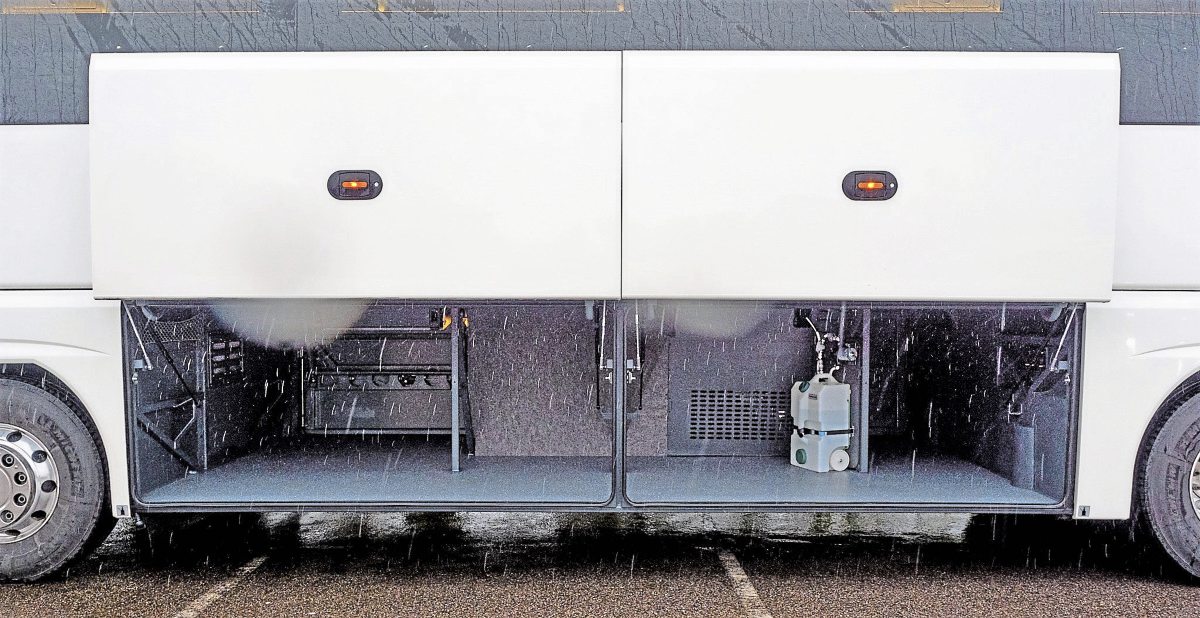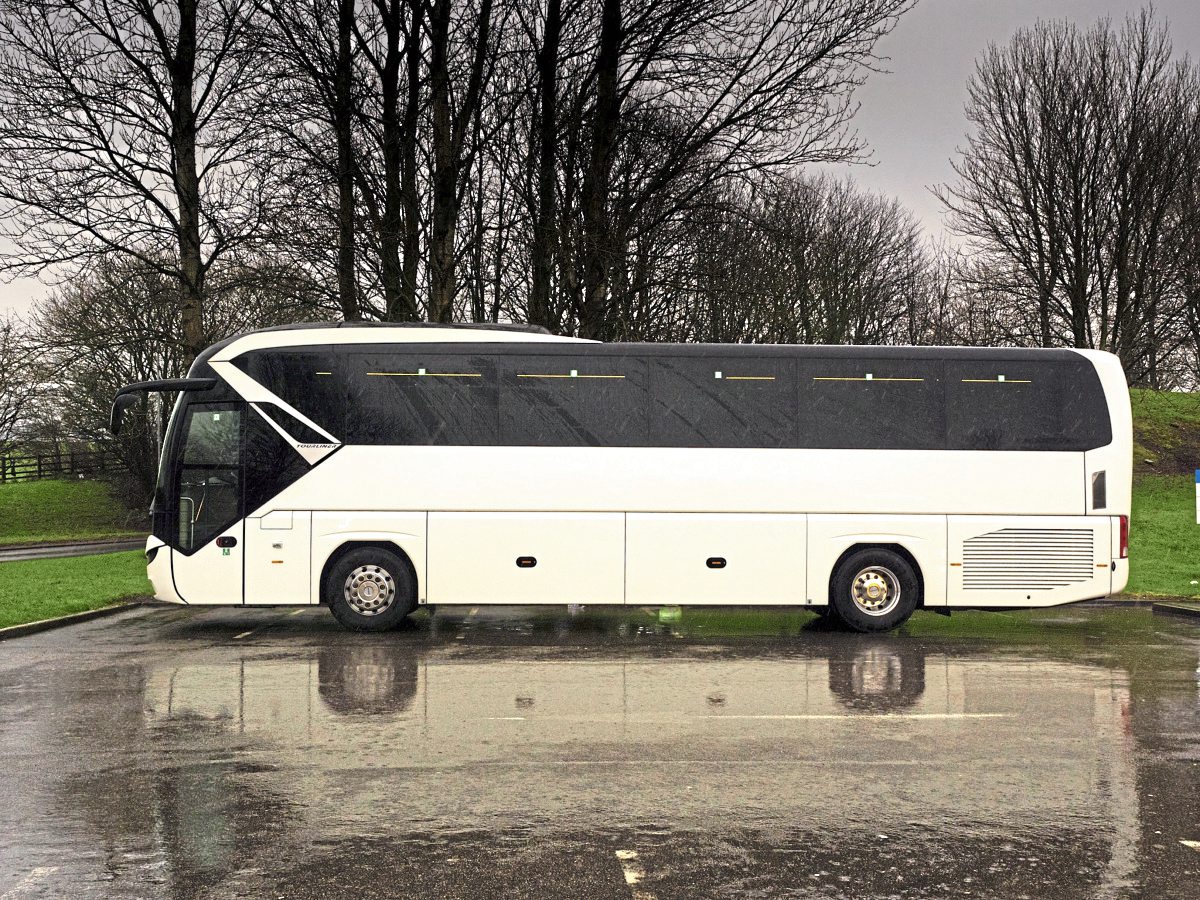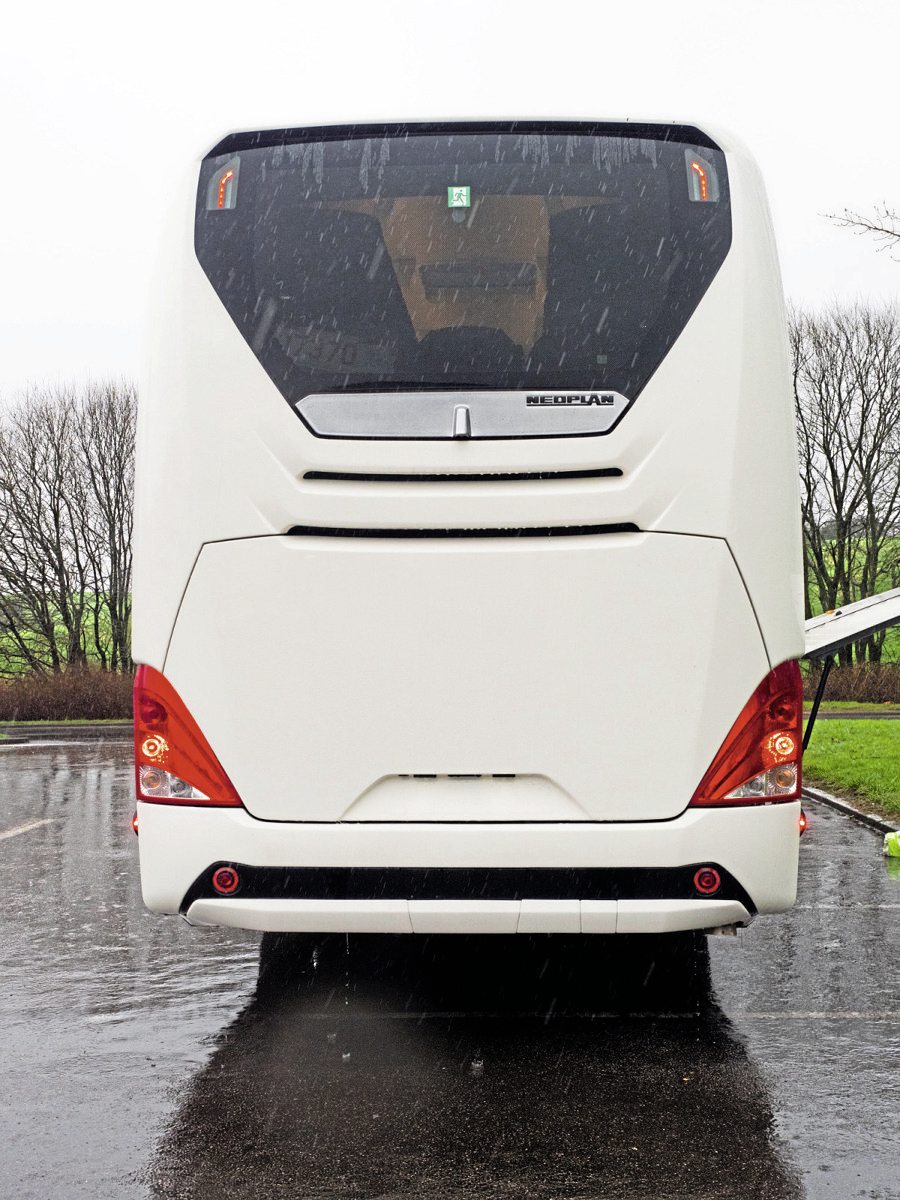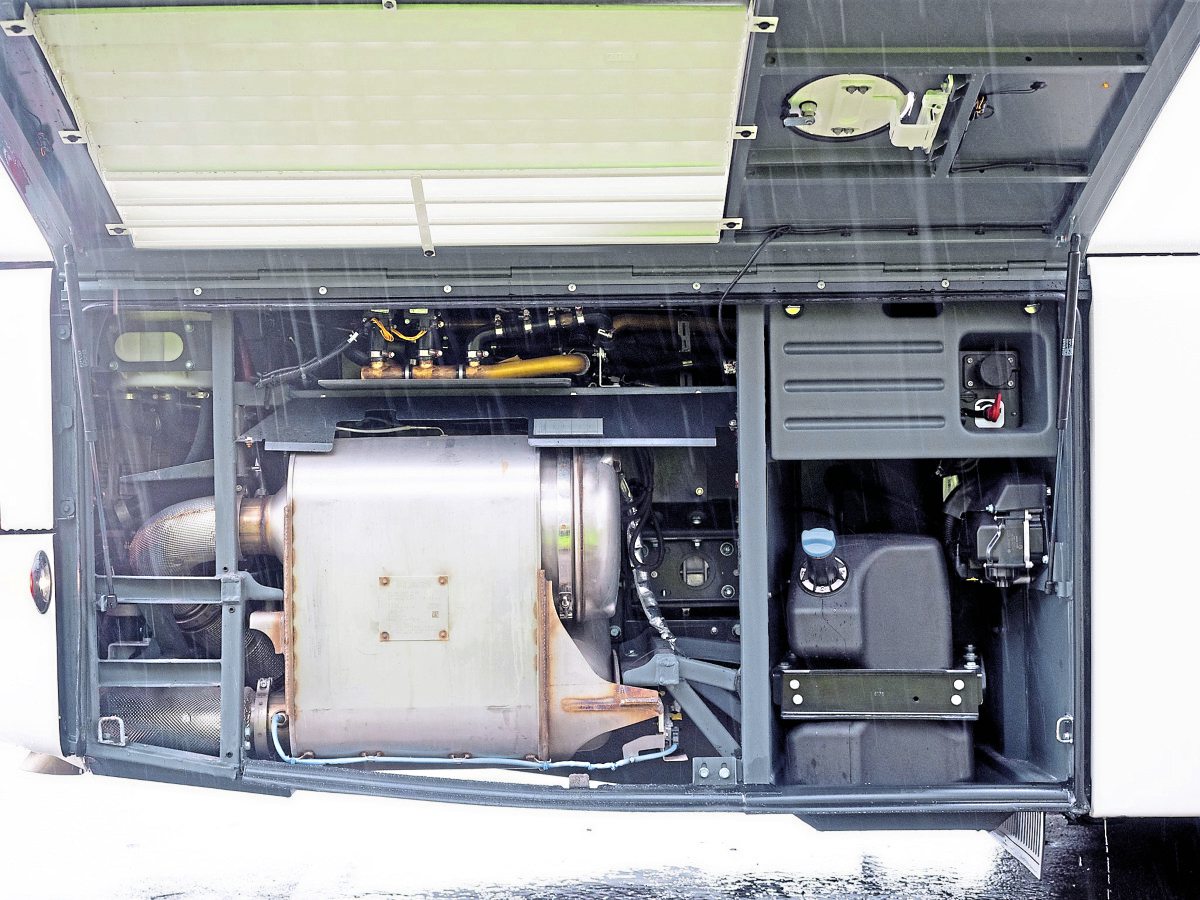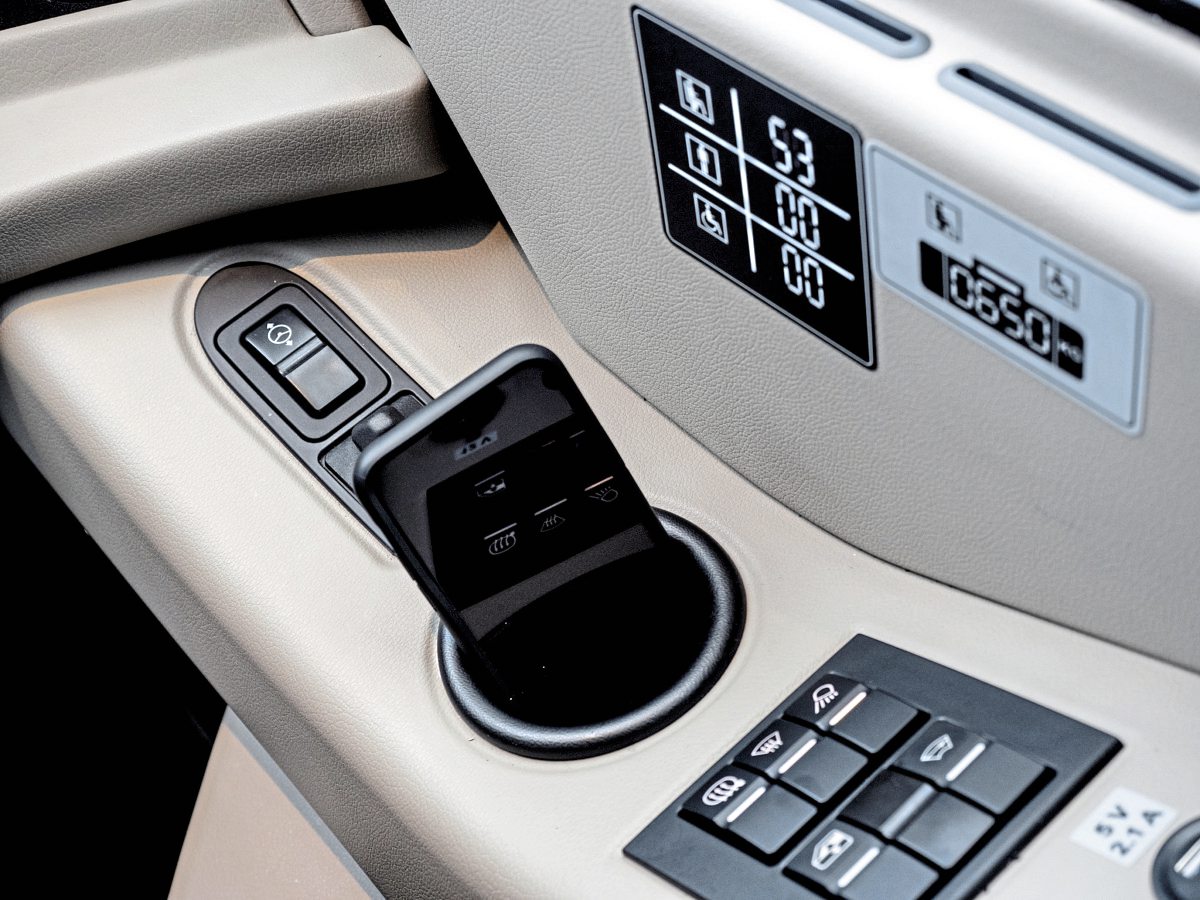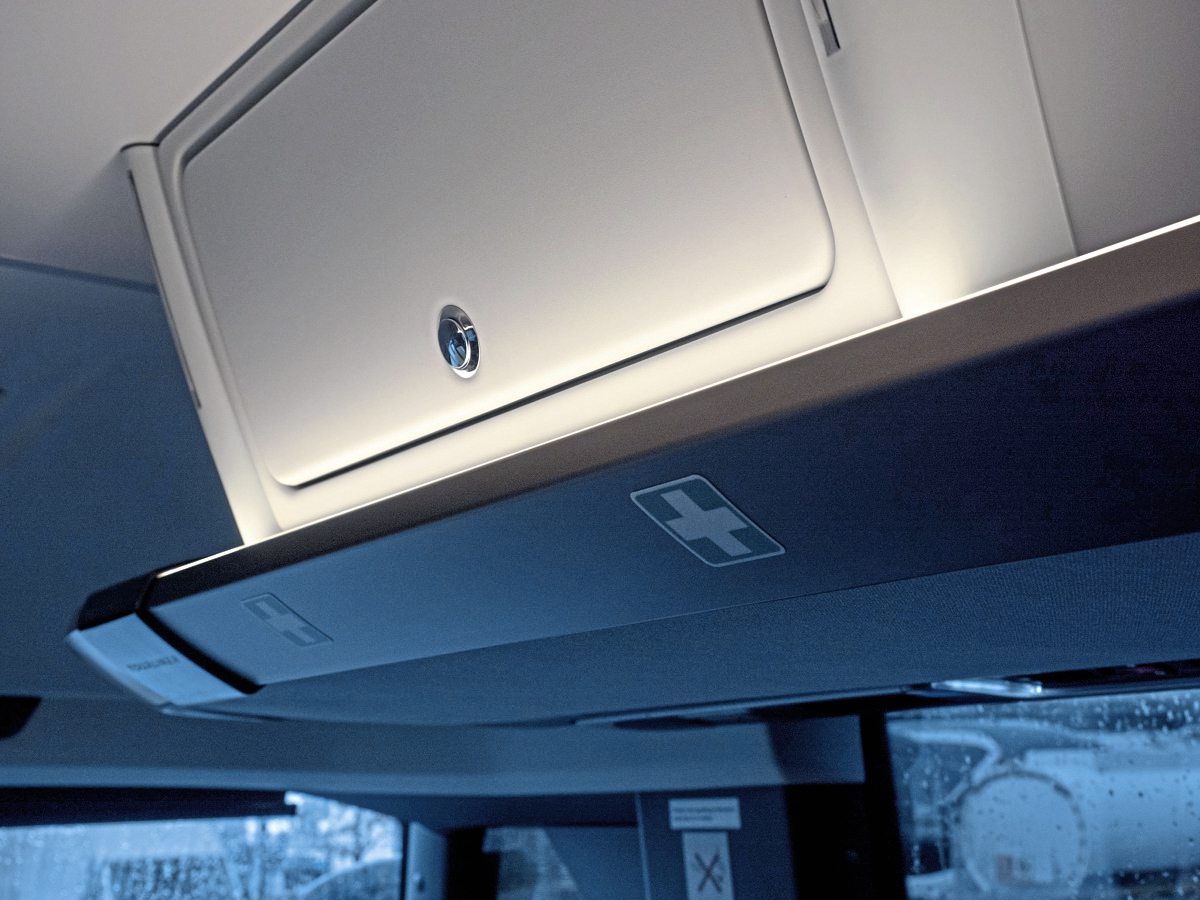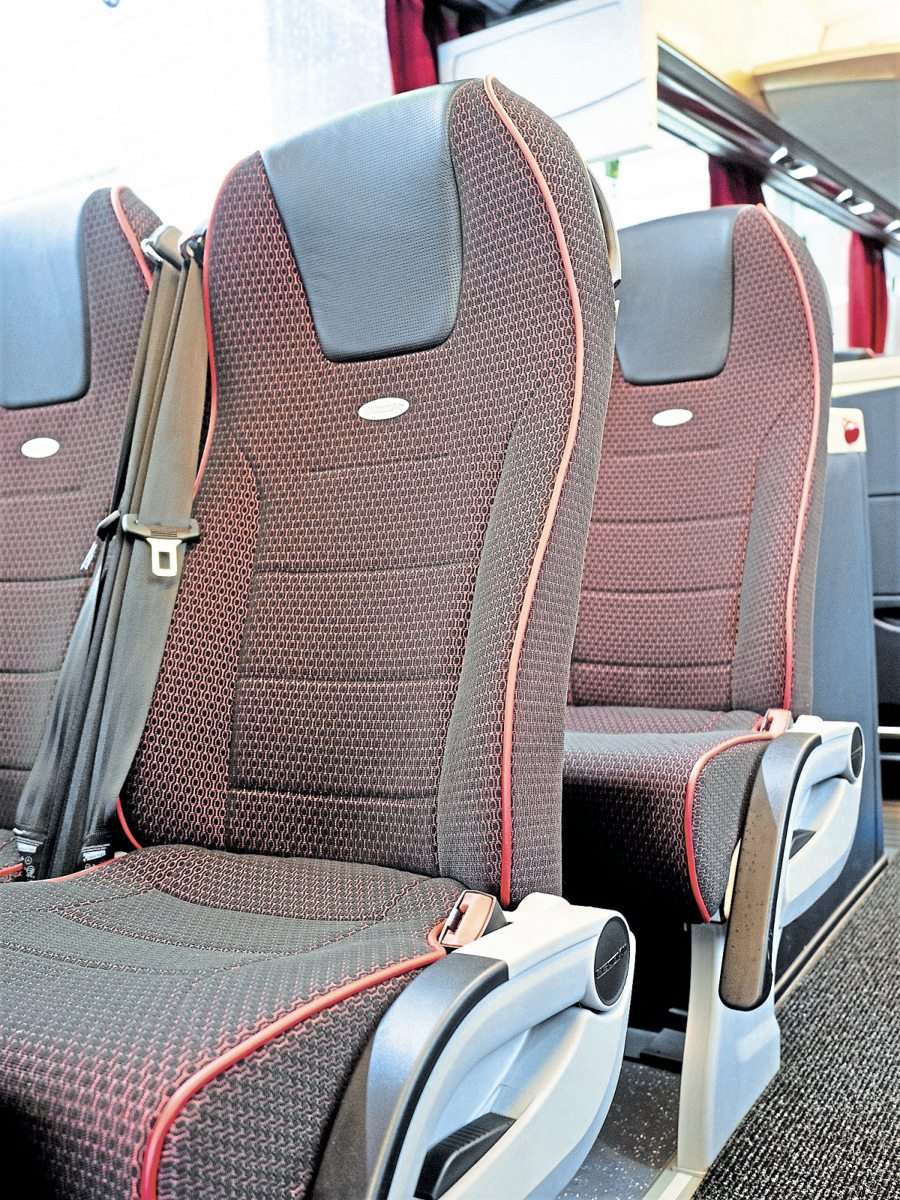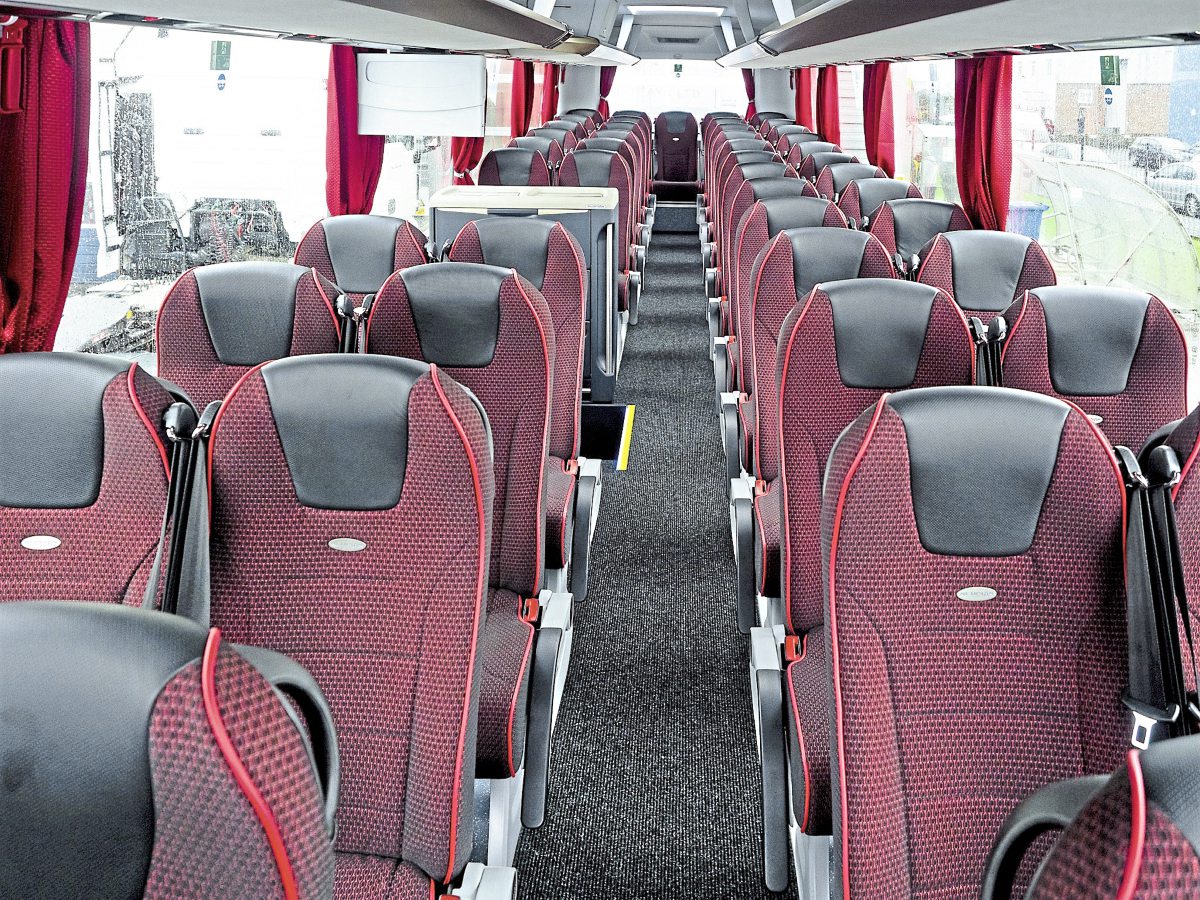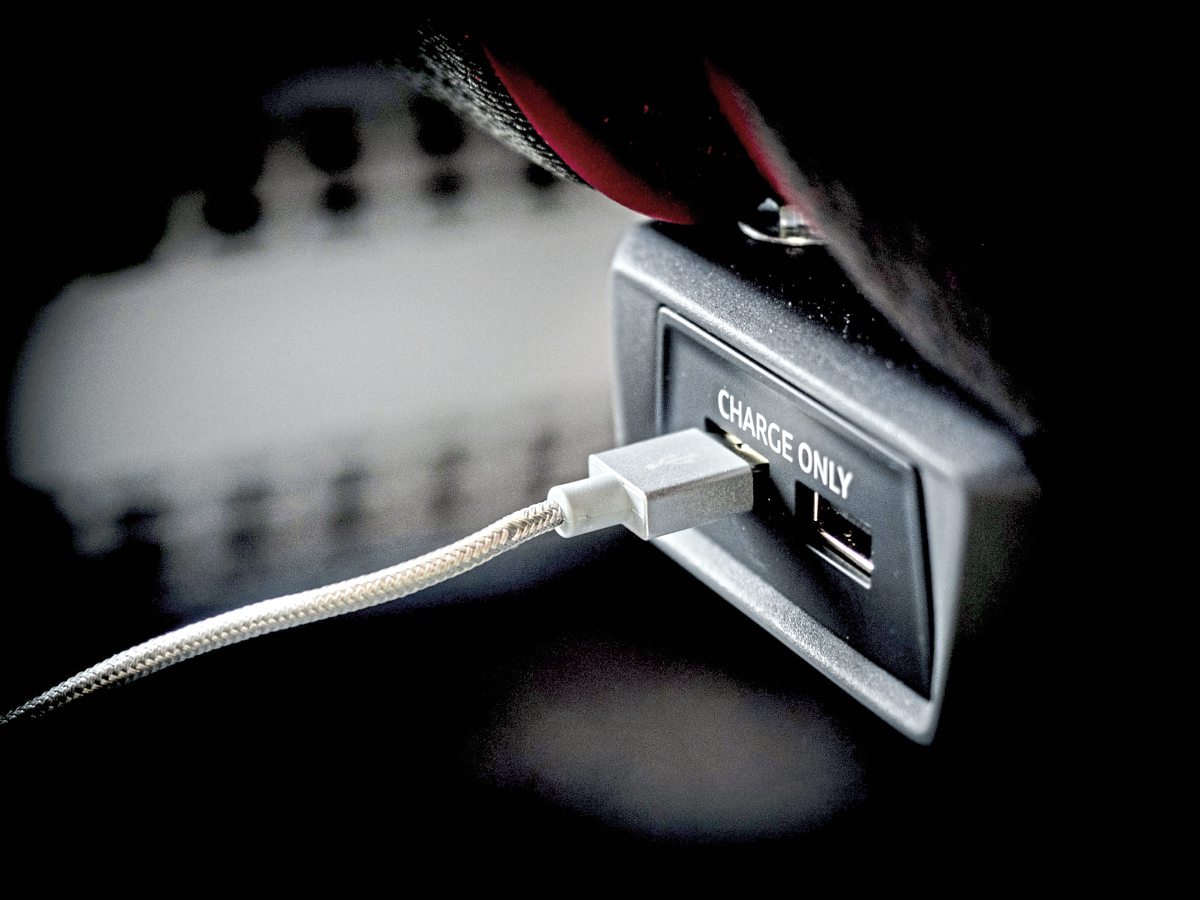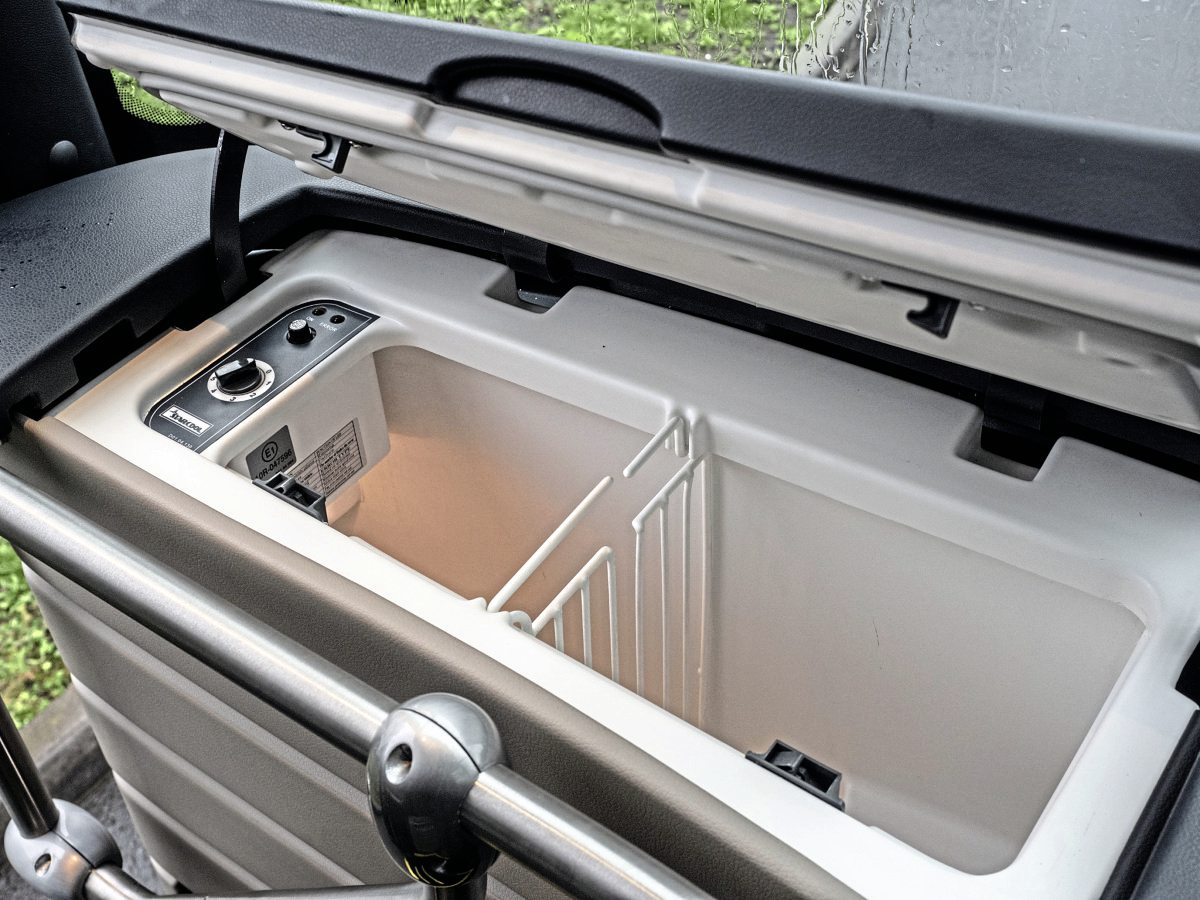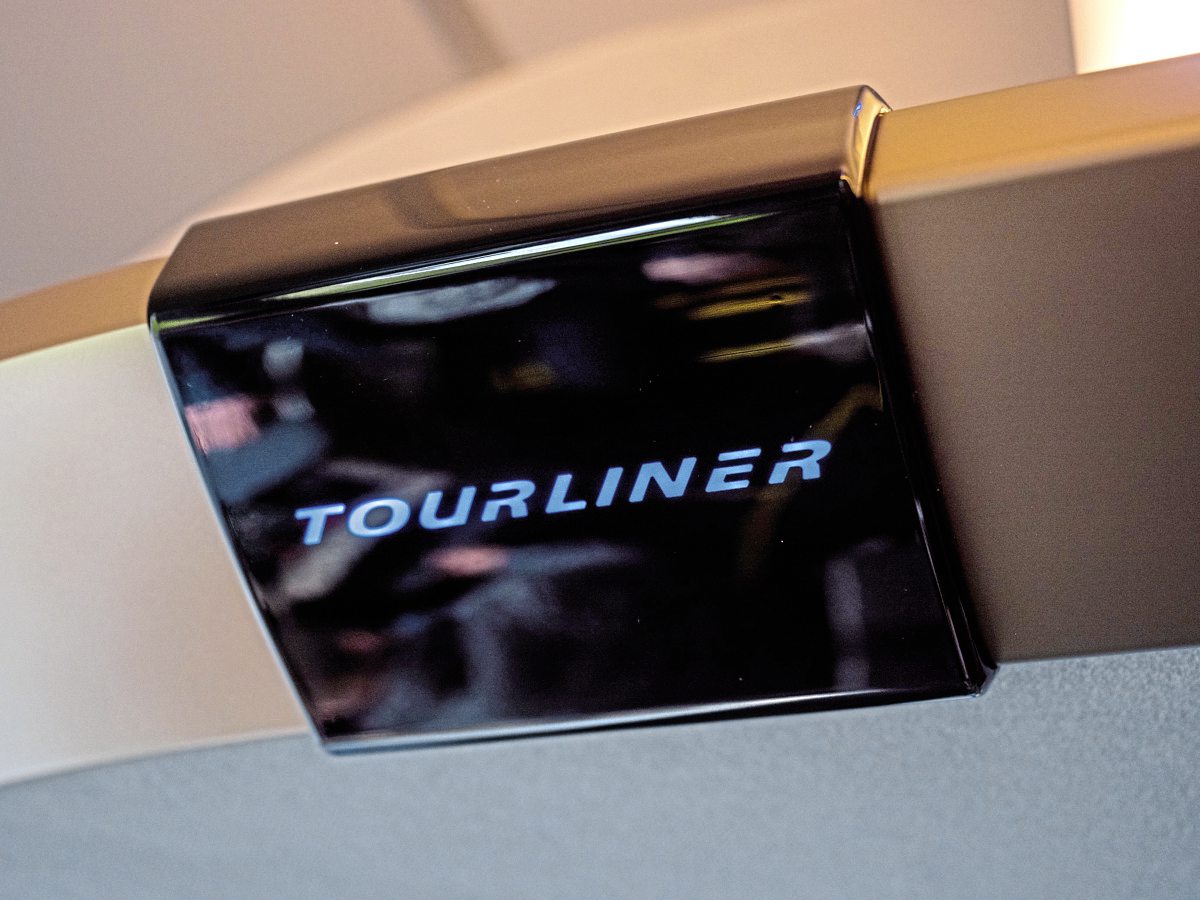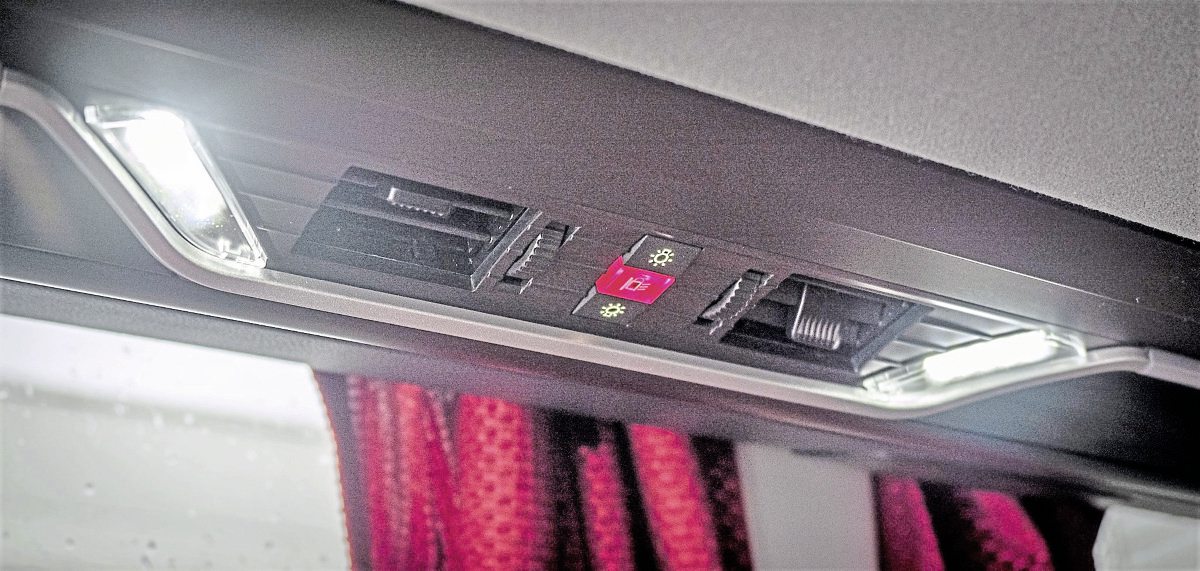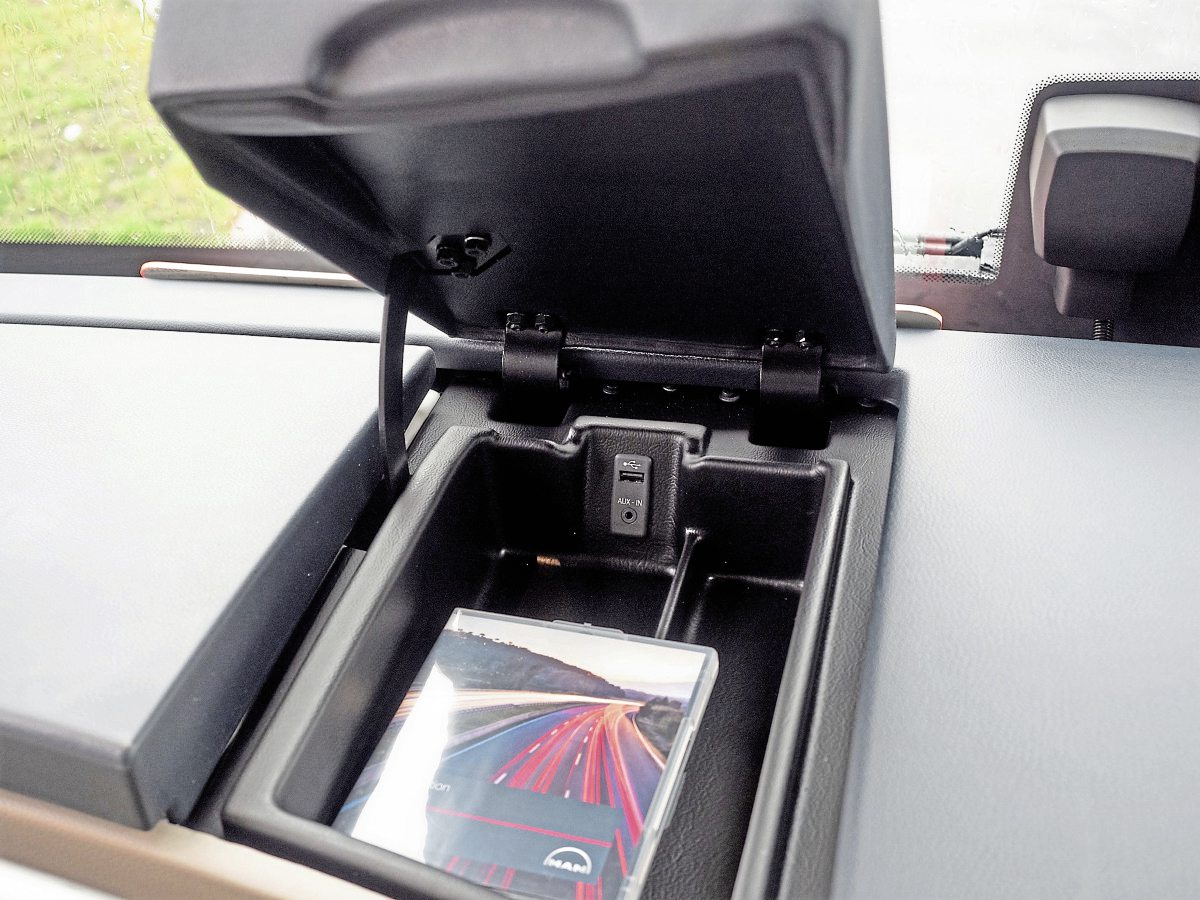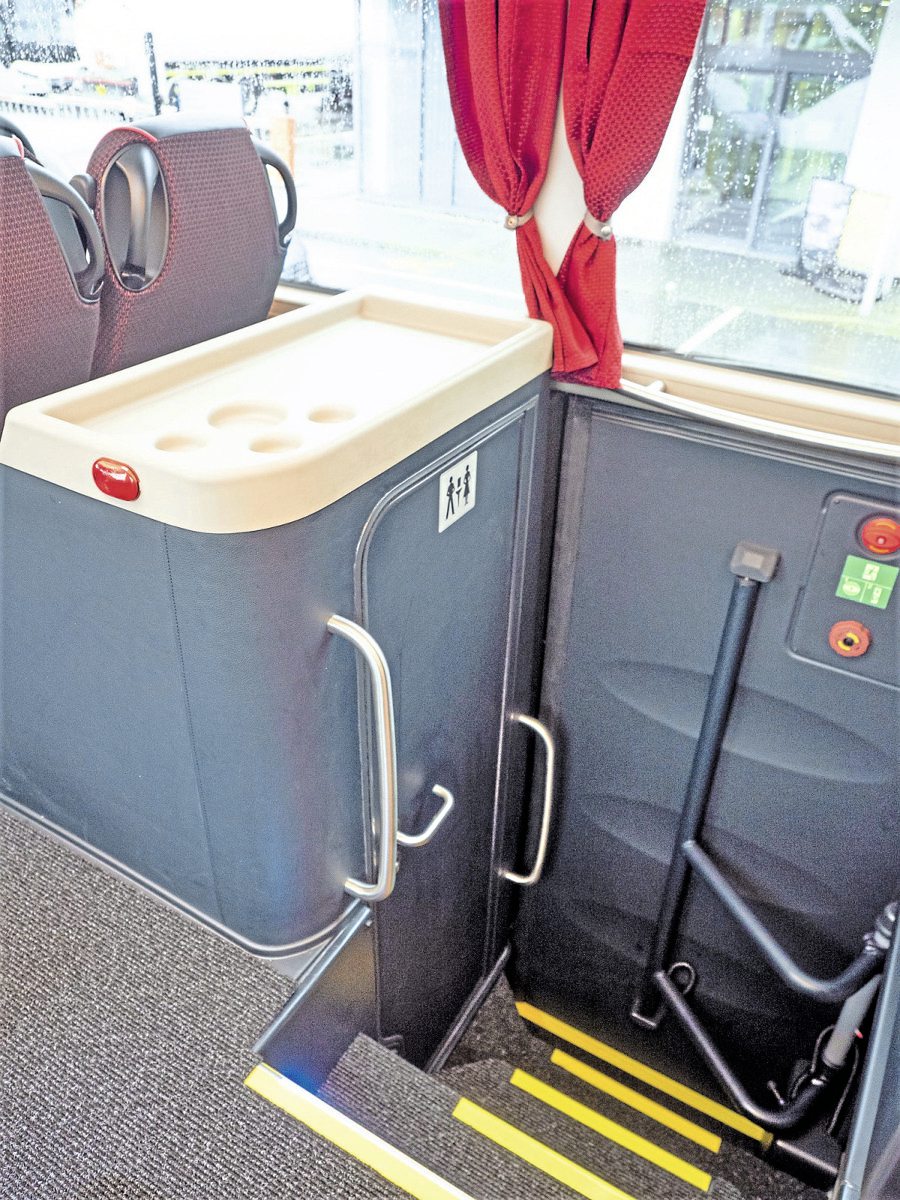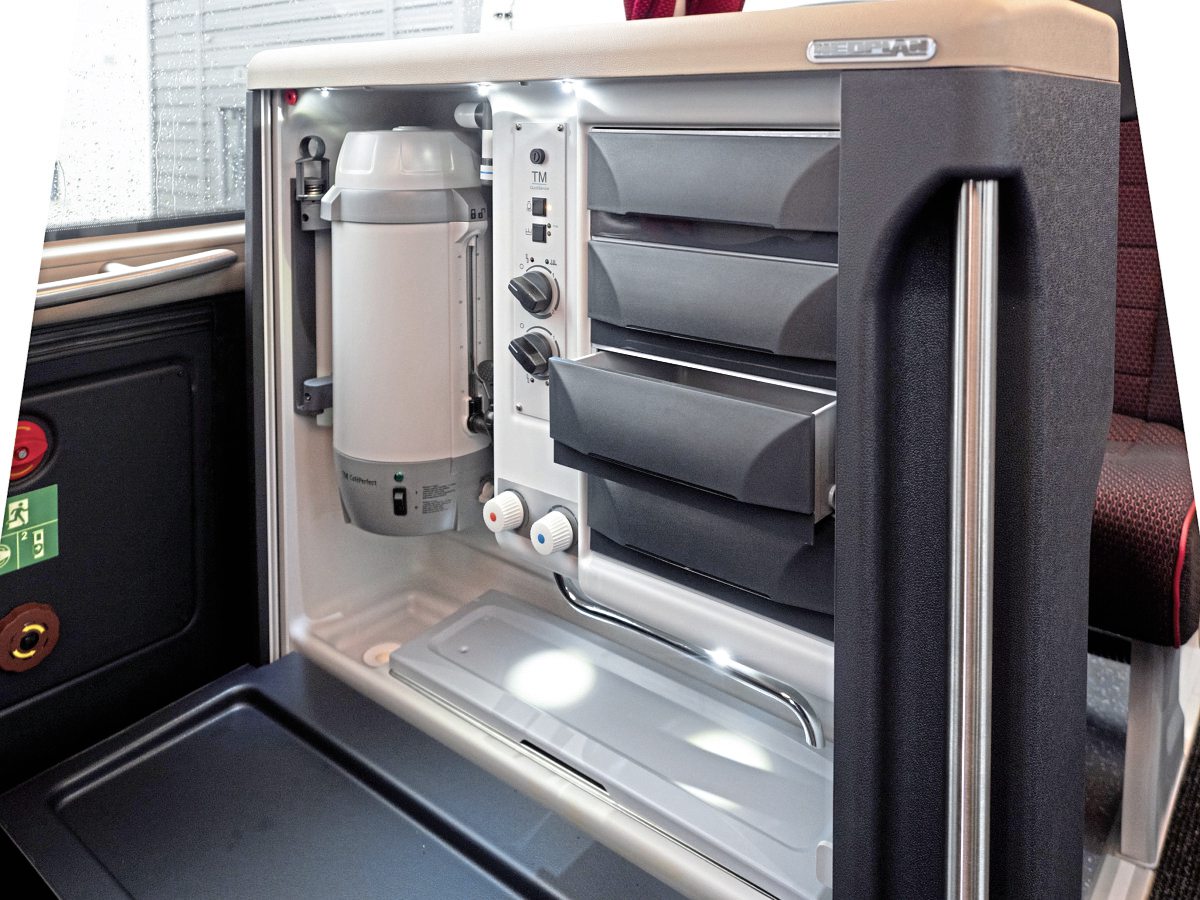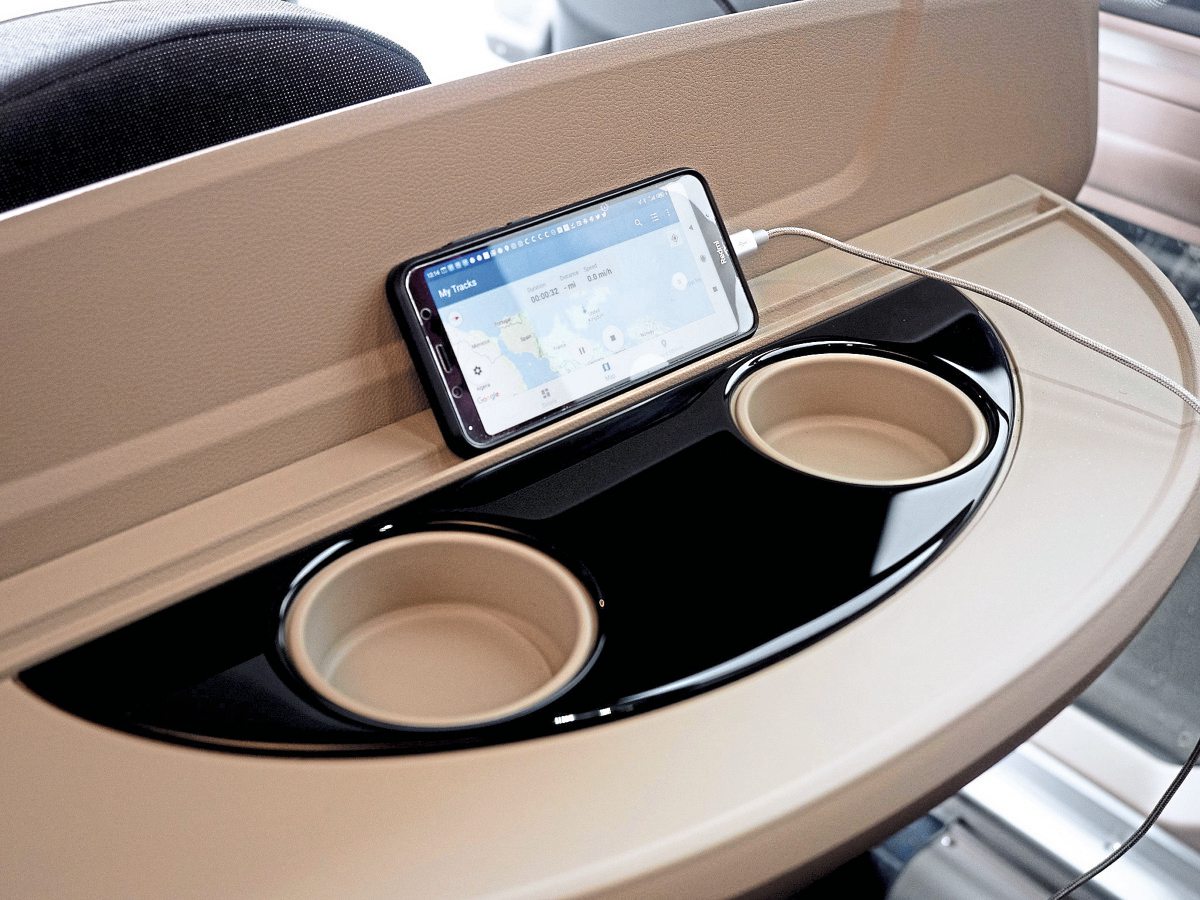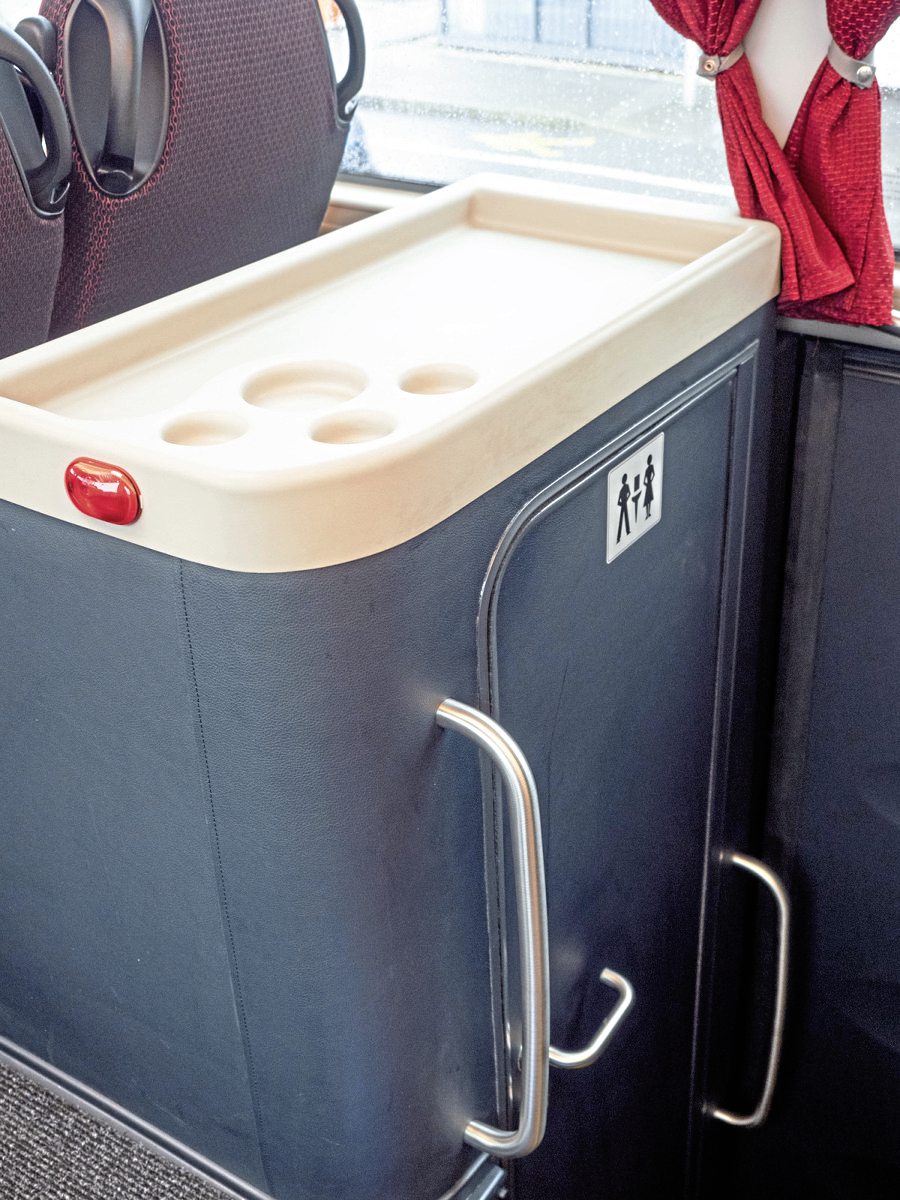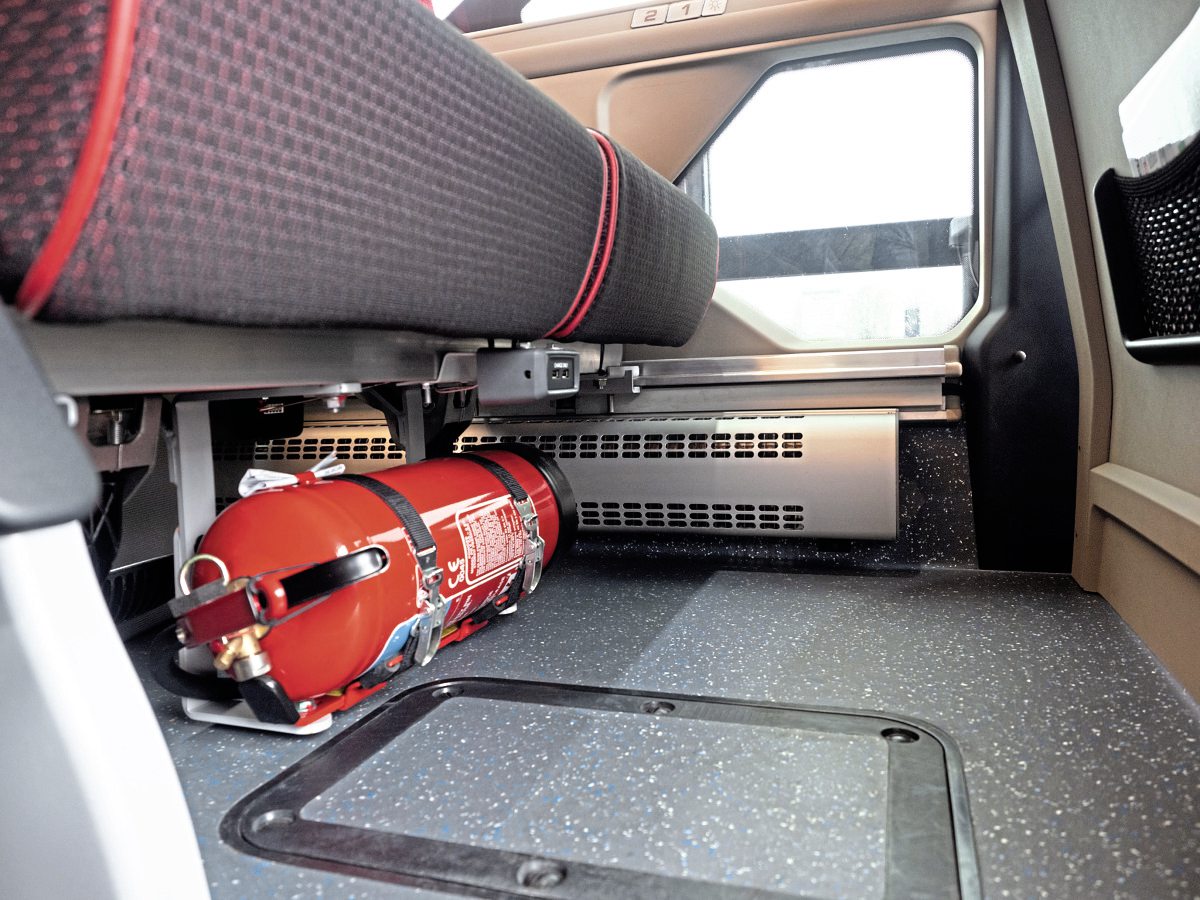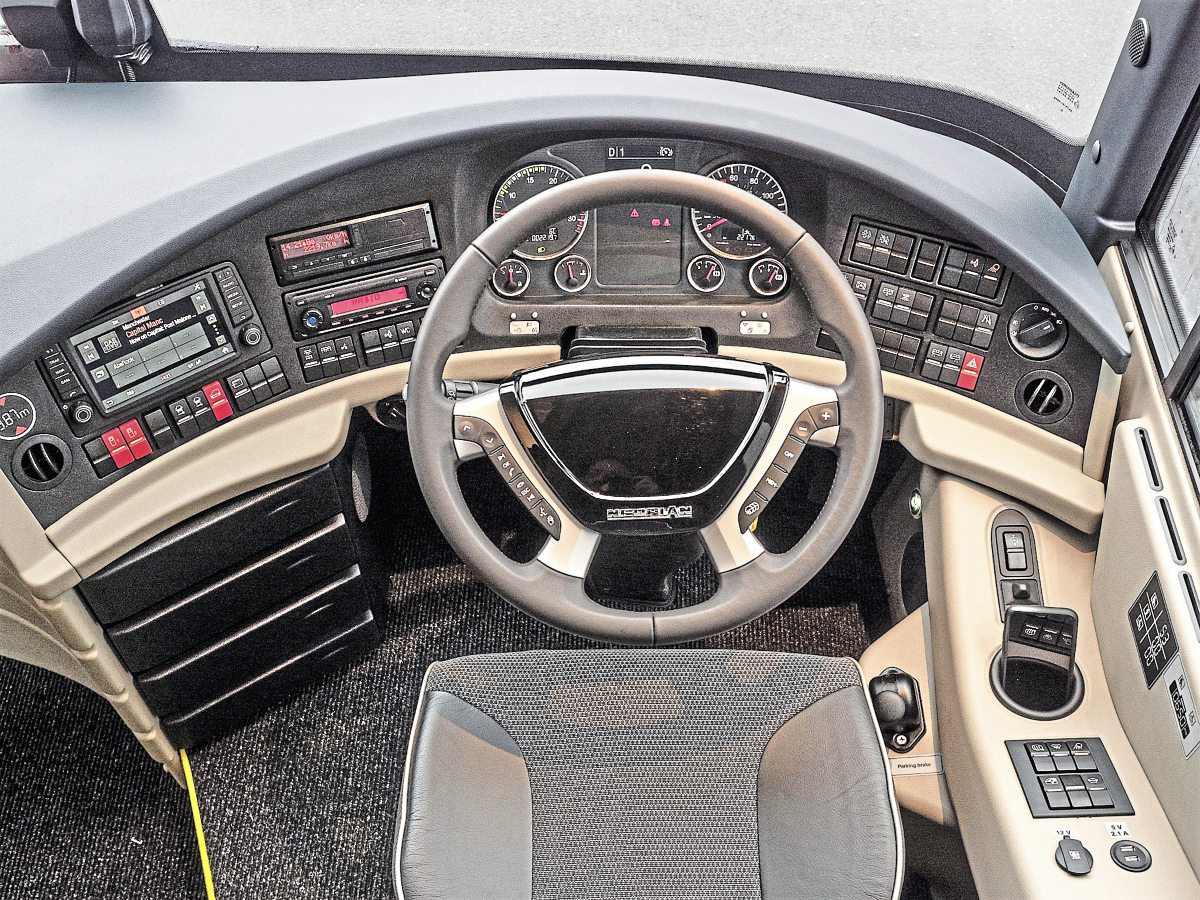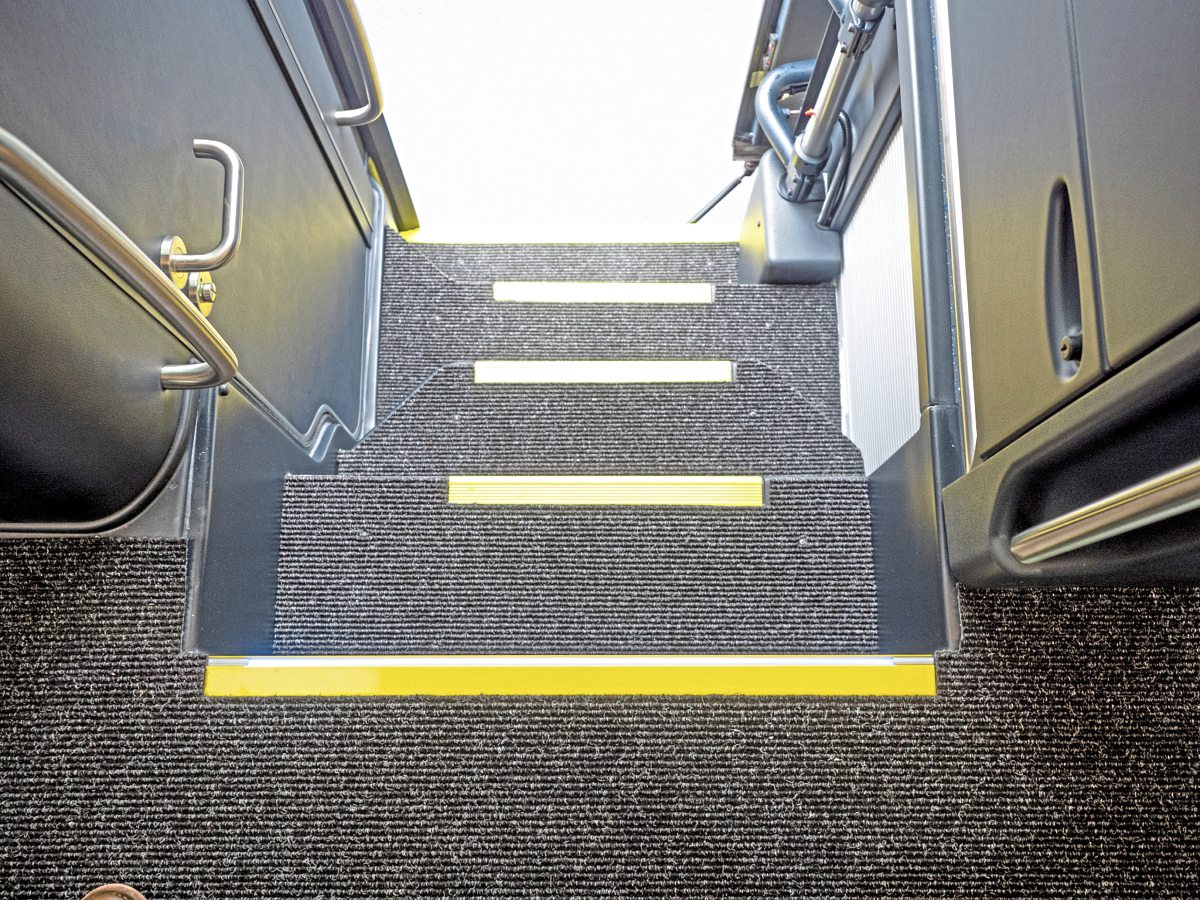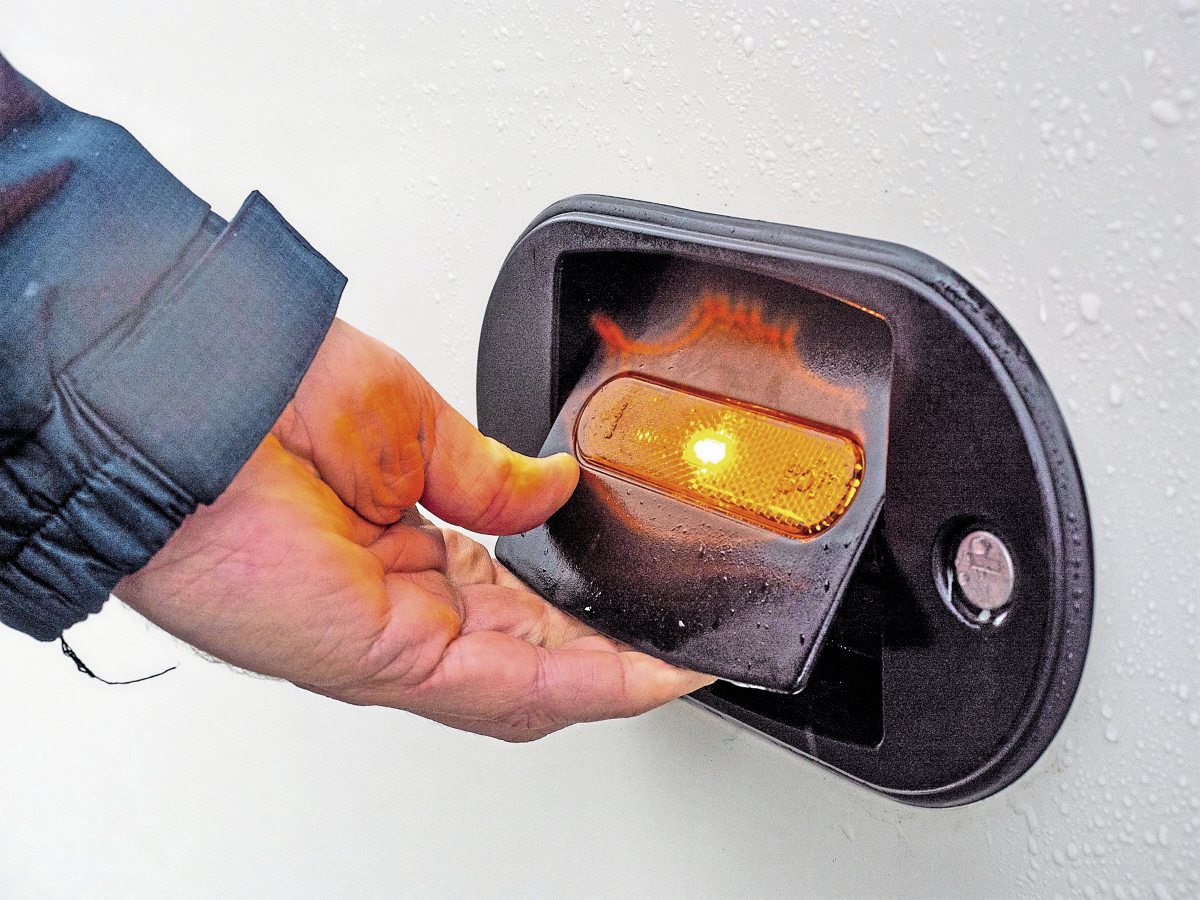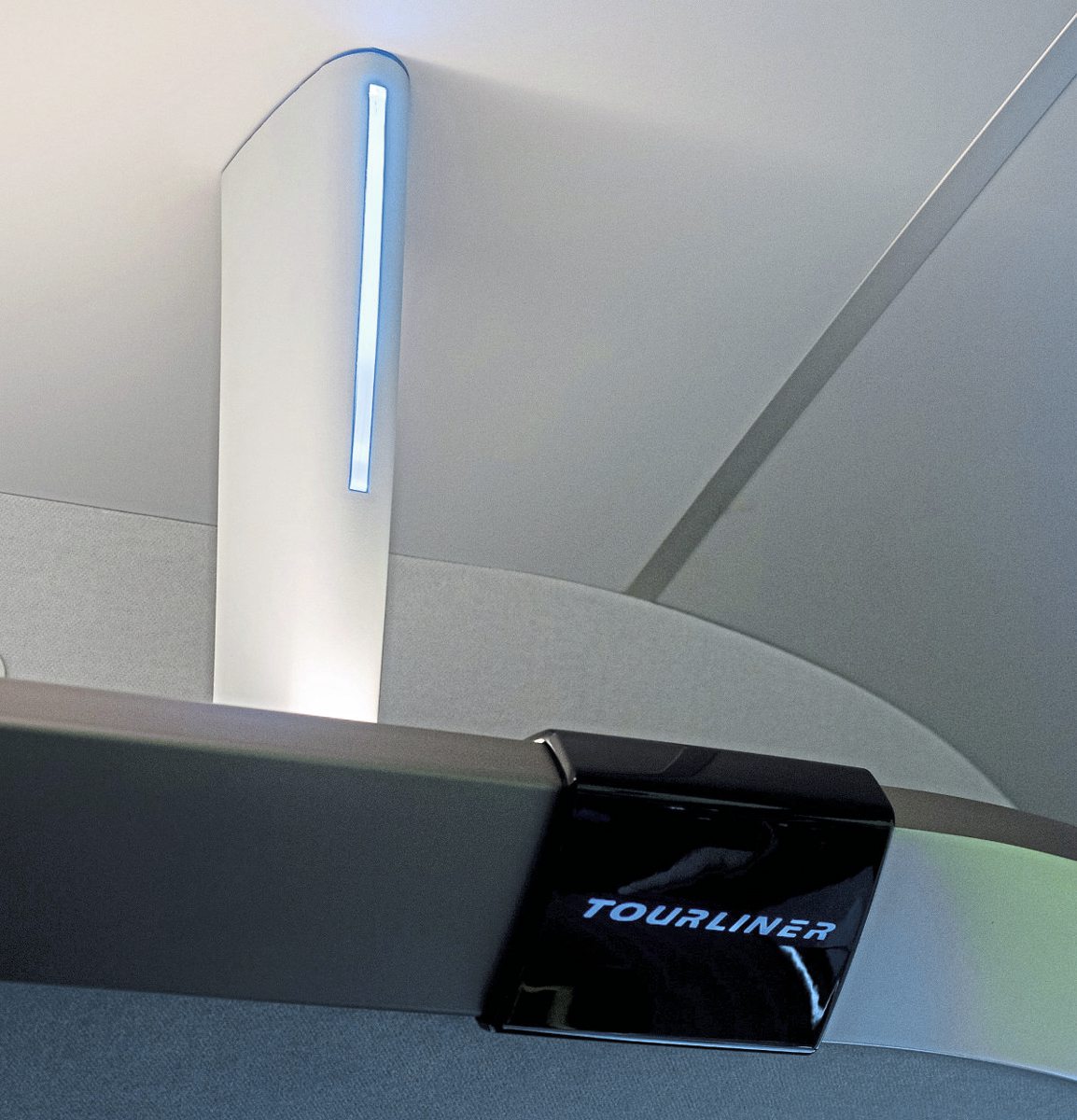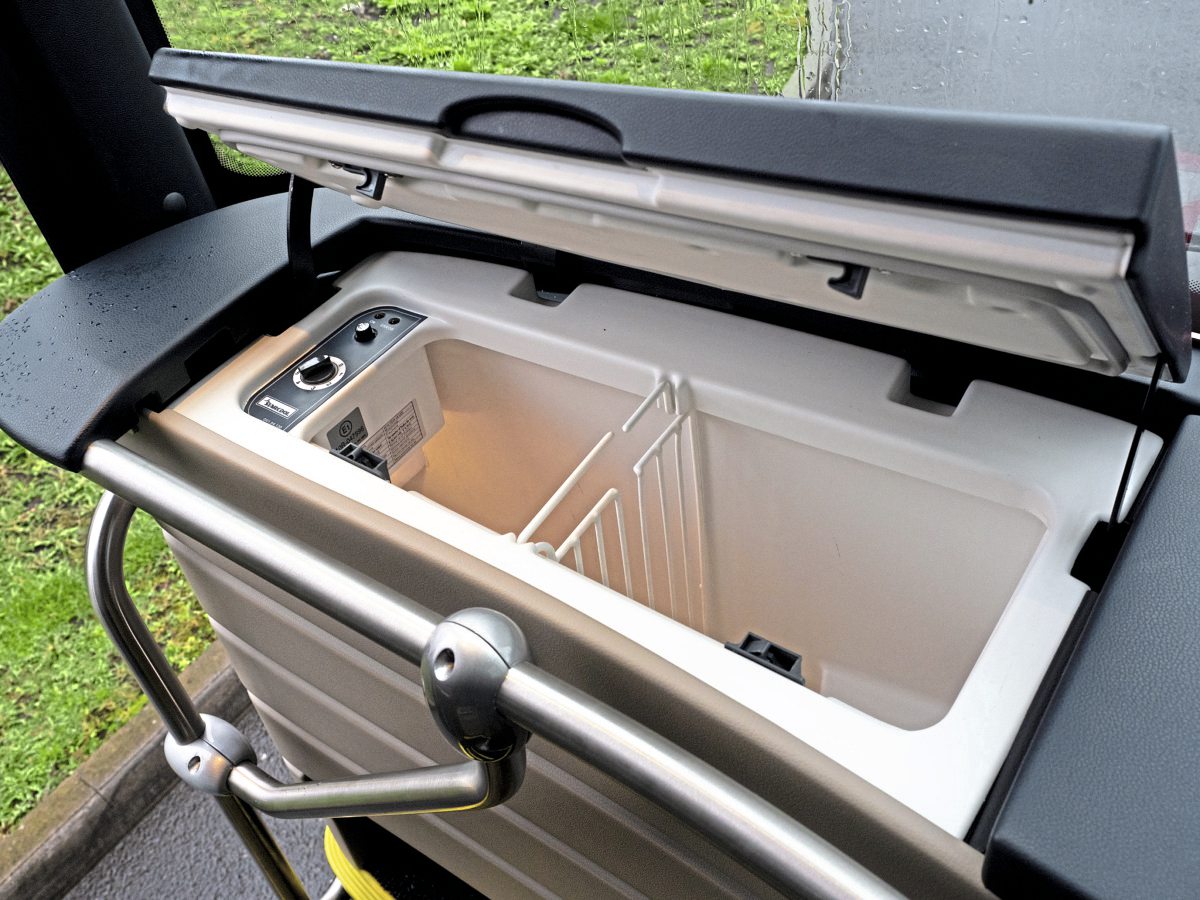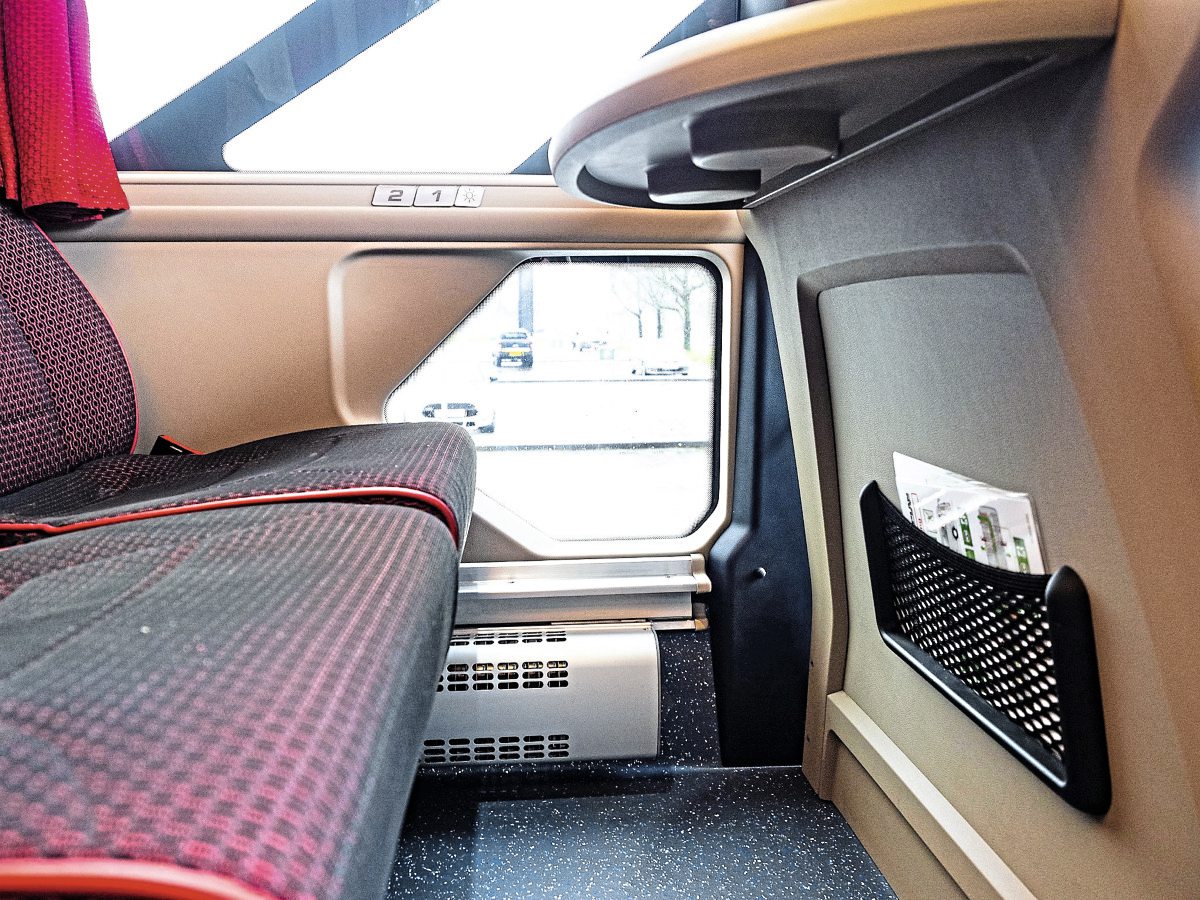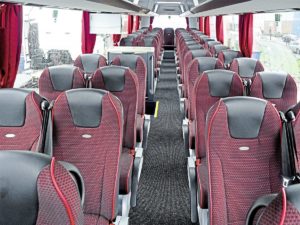Tweaked Tourliner
Neoplan has made some small upgrades to the Tourliner which we think add up to a lot more than you think. Ringing the changes, we took the 51-seat 12-metre variant out for a spin in the teeth of a storm…
We couldn’t really have chosen a worse day to road test a coach – at the peak of Storm Jorge, who was busy dumping a month’s rainfall on the north-west in 24 hours.
But if anything was going to show up any deficiencies in MAN’s tweaked Tourliner, Storm Jorge was it. The rain coupled with gusty winds would show just how stable this tourer is when the elements conspire against the driver.
We’ve road-tested the Tourliner before, of course. In January of 2019 we tested the 13.1-metre P10, and concluded that it was very much a product of the Volkswagen group; that blend of driveability and practicality which has come to define cars with the VW and Audi badge. There’s an engineerinng philosophy going on here, perhaps. You’d hardly call the Golf, for example, an exercise in radical styling, and inside, nothing makes brings out any emotion one way or the other.

Compare the 13m we tested last year above) with the 12m in this road test; the only obvious element is the glazing in the B pillar
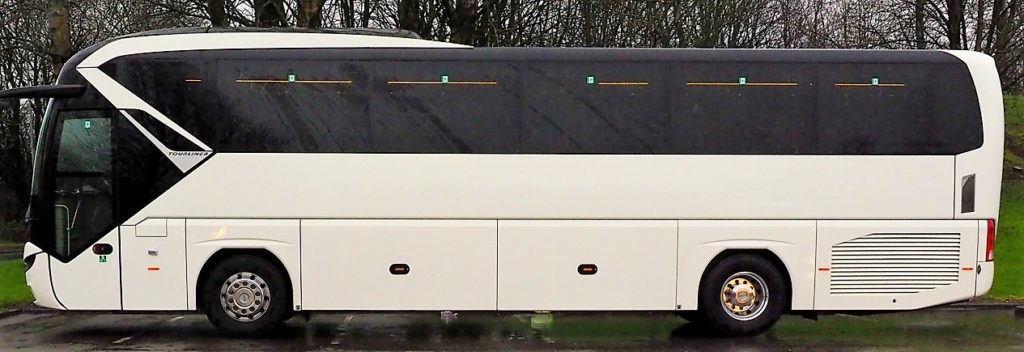 What you get with a VAG product is sound engineering, ergonomics that work and the guarantee that you can be behind the wheel for four hours without emerging exhausted. That’s what the P10 did for us last year.
What you get with a VAG product is sound engineering, ergonomics that work and the guarantee that you can be behind the wheel for four hours without emerging exhausted. That’s what the P10 did for us last year.
This example isn’t, to be fair, markedly different. It’s a metre shorter with 51 instead of 57 passenger seats. It’s the latest incarnation of MAN’s six-cylinder D2676 LOH engine with 430bhp married to ZF’s latest EcoLife automatic gearbox. It’s still very recognisably a Tourliner. But then, you’d probably say that about the latest Golf…
The most obvious difference is in the B pillar glazing, as the pictures above and right show. Neoplan has added an extra pane within the B pillar shroud at passenger knee level, which not only lets in a little more light and looks good, but perhaps surprisingly gives the driver a glimpse of the road to the left.
Externally, there’s not a lot else apart from the new locker door handles which, to be honest, look much like the old ones. Beneath the skin and inside the coach, though, there’s more.
We’ll start with the axle ratio, which has been increased to take full advantage of the D26 engine’s really impressive torque. More of that later. As you’d expect, the engine continues to get tweaks albeit no more power, and the ZF EcoLife gearbox has been further tuned to the engine’s performance.
Then there’s the interior, which was…. well, read on
Exterior
The Neoplan Tourliner is distinctive, with the forward-swept B pillar and very neatly accomplished continuation of the white up on to the roof, set against the gloss black of the air conditioning pod.
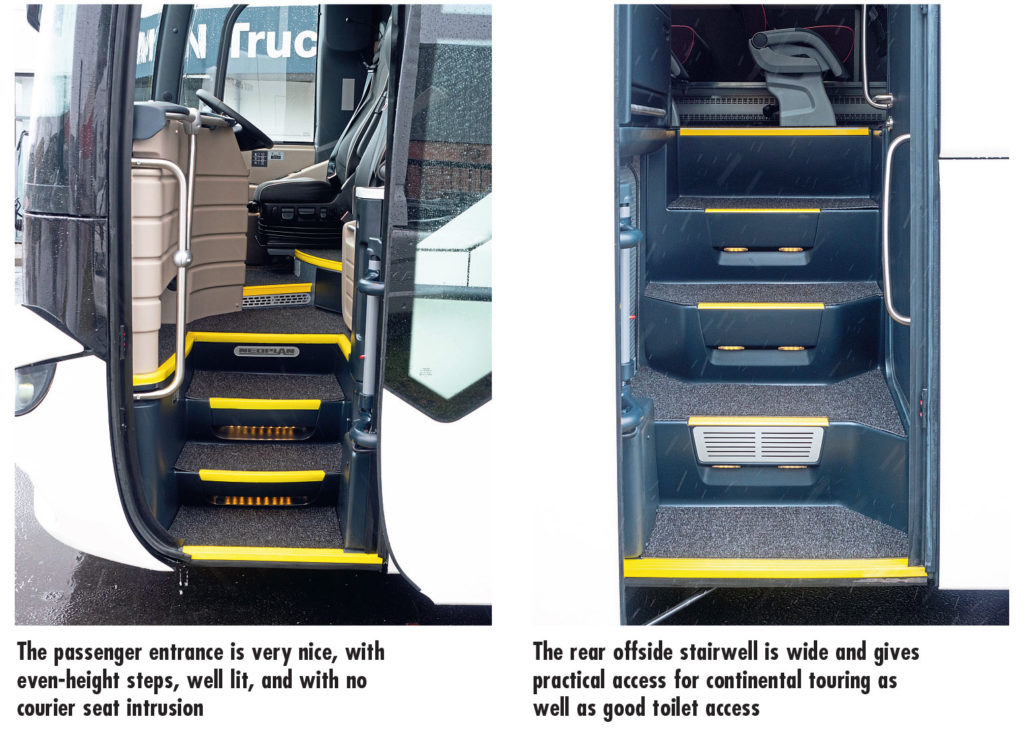 The styling is subdued and doesn’t age, as we said last year.
The styling is subdued and doesn’t age, as we said last year.
The Tourliner has some kerb presence, though, and remains among the nicest finished coaches we have tested with very even shut gaps between the panels and rigid locker doors which close with a satisfying clunk. At the front, the styling remains the same though one invisible advancement is that the xenon headlamps in the neat, narrow cluster are now LED, and include cornering lamps. The proximity radar is mounted centrally on the Neoplan-badged panel between the headlamp clusters. We confess, the weather drove us back aboard the coach pretty quickly, or we could have shown you that the panels around the lower front give easy access to serviceable items such as bulbs – not that you are likely to need to replace LED lamps in the near future.
The Tourliner has some kerb presence, though, and remains among the nicest finished coaches we have tested
At the rear, the engine bay door is a smart rhomboid, the twin louvres over it echoing the lower edge of the rear screen trim. The screen trim carries the reversing camera while the high-level rear lighting is behind the screen itself. Once again, Neoplan doesn’t miss the opportunity to add a logo.
It’s unmistakeably a Tourliner, this length having two locker doors, the 13.1m we tested, three. Locker space is an adequate 10m3 though it has no ‘ski lockers’ or additional space, so while touring won’t pose any issues, additional sports equipment or musical instruments might challenge the space available, as with most coaches of this size.
The glass is worthy of mention, with four of five front and rear side panes identical, so stock for the majority will be minimal.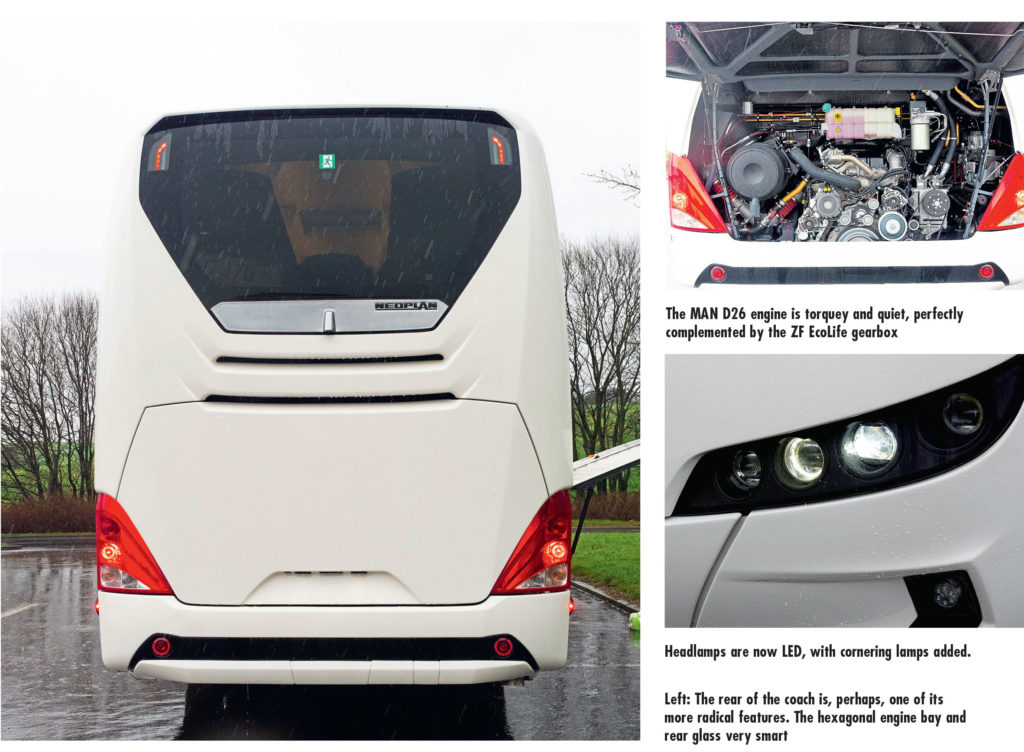 While we’re looking at the exterior, we should mention that the centre door is exceptional on Tourliners, not only being impressively wide and thus practical for use abroad, but with even step heights, well-lit and with plenty of grab rails including a new one overhead. This not only benefits boarding but gives comfortable access to the toilet.
While we’re looking at the exterior, we should mention that the centre door is exceptional on Tourliners, not only being impressively wide and thus practical for use abroad, but with even step heights, well-lit and with plenty of grab rails including a new one overhead. This not only benefits boarding but gives comfortable access to the toilet.
At the front, the entrance is similarly accomplished. The gangway is excellent, and on the last-but-one step, Neoplan has designed a radiused step edge one below the aisle height, which lends it some style which, at first, you don’t really notice. Time to climb aboard…
Interior
The Tourliner always has had a very well structured passenger entrance. Six steps reach the aisle height, the fifth, as mentioned, curved across towards the driver. The entry is flanked to the left by a smart panel with foot recess for the courier, with a brushed stainless grab rail. The courier seat sits well clear of the steps, and has a courier mic.
The entry is flanked to the left by a smart panel with foot recess for the courier, with a brushed stainless grab rail. The courier seat sits well clear of the steps, and has a courier mic.
On the left, on top of the dashboard, is a very capacious fridge. The driver has an Isri suspended seat and a generally well laid-out dashboard. To the left is a stack of four lockers above which is the Bosch MMC multimedia unit with Bluetooth for two phones and AUX connectivity, with sat nav. The driver can link an iPhone or Android device to use their own sat nav or music collection, via a neat flip-lid locker which houses the USB data connection and the AUX in 3.5mm jack.
The MMS is also the reversing/centre door camera screen. Right of this is the tachograph.
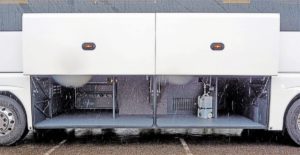
Luggage bay is spacious enough for most touring applications. Apologies for the raindrops on the camera lens…
Centrally, the main instrument binnacle is worth singling out for its clarity. In addition to tacho and speedo, there are fuel and temperature gauges, plus the central screen which is toggled from the multi-function steering wheel to display coach functions and diagnostics: “There’s a really good view of the binnacle through the steering wheel,” said our coach driver. “I find it astonishing that some coaches we test have not paid attention to this. On some, you cannot even see the speedometer properly.”
The multifunction steering wheel is a style upgrade, with a piano-black centre and a self-adhesive Neoplan logo, which is likely to become a casualty of inquisitive hands. It has the cruise control, phone controls, mic switch and retarder button on it.
Most of the saloon-related controls are to the left and the vehicle controls to the right, the handbrake sitting low to the right, perhaps a little uncomfortably close to the driver’s right leg. One neat idea is that the driver has a toilet lock release switch.
“There’s a really good view of the binnacle through the steering wheel, I find it astonishing that some coaches we test have not paid attention to this.
The test driver was a little critical of the climate control, positioned to the right and almost beneath the steering column: “I think I’d prefer the tachograph to be in this position and the climate control where the tachograph is,” he said. There’s also an SCR regen switch.
The front row of seats have smart fixed tables with a piano-black inserts with cupholders and a groove for smartphones. USBs are between the seat pairs.
The passenger seats are Brusa Creolo, with seatback tables, recline and side-shift and footrests. The test vehicle had Hytex flat fabric and leather headrest insets. As we have said before, these are very comfortable and not so high that the passenger doesn’t get a view ahead.
Seat positions are very good, with only row four having the view restricted by a pillar. Although there’s a small aisle drop at the front, this slopes up to a flat floor from row two onwards. The rear row of seats are on a plinth.
At floor level, there are full-length convector heaters suspended above the flooring, which is itself curved upwards to the sidewall to leave no dust traps.
Overhead, the luggage racks, with new passenger service units, are generously proportioned – big enough for small rucksacks, for example – and very well finished in a brushed aluminium look. There are three lockable lockers in the racking.
The toilet and hot water unit are to the left and right of the centre stairwell. The servery is a TM unit which gives on to the stairwell, with a slide-and-fold door which creates a work surface, a swing-out boiler and a sausage heater. It has its own grab rail.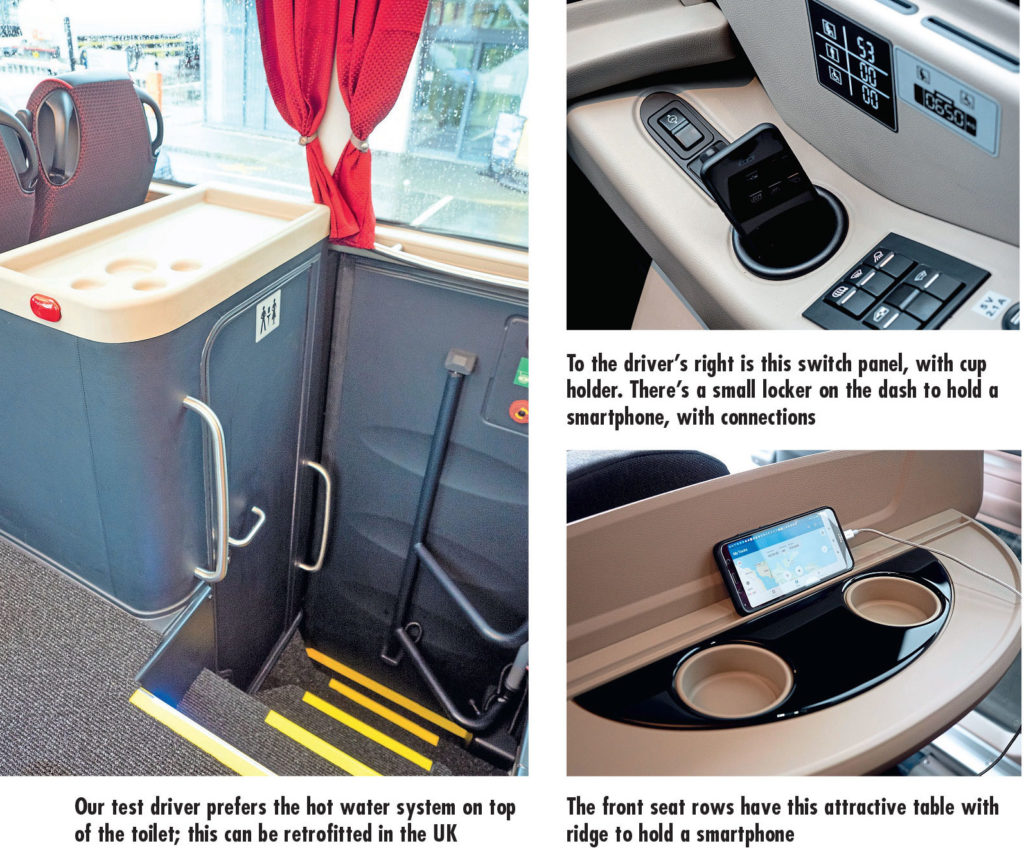 The test driver admits he’s not fond of serveries in this position, preferring them atop the toilet, but the quality of the TM unit is excellent. It’s clearly designed for the courier to distribute the drinks and snacks (there’s some storage here, too) and if that’s your style of touring, that’s a subjective criticism.
The test driver admits he’s not fond of serveries in this position, preferring them atop the toilet, but the quality of the TM unit is excellent. It’s clearly designed for the courier to distribute the drinks and snacks (there’s some storage here, too) and if that’s your style of touring, that’s a subjective criticism.
Driving
The Tourliner had got off to a good start with Coach Stig, offering not only a great view of the speedo and tacho but a seat with plenty of adjustment, sliding back far enough to accommodate even the most, er, generously built driver.
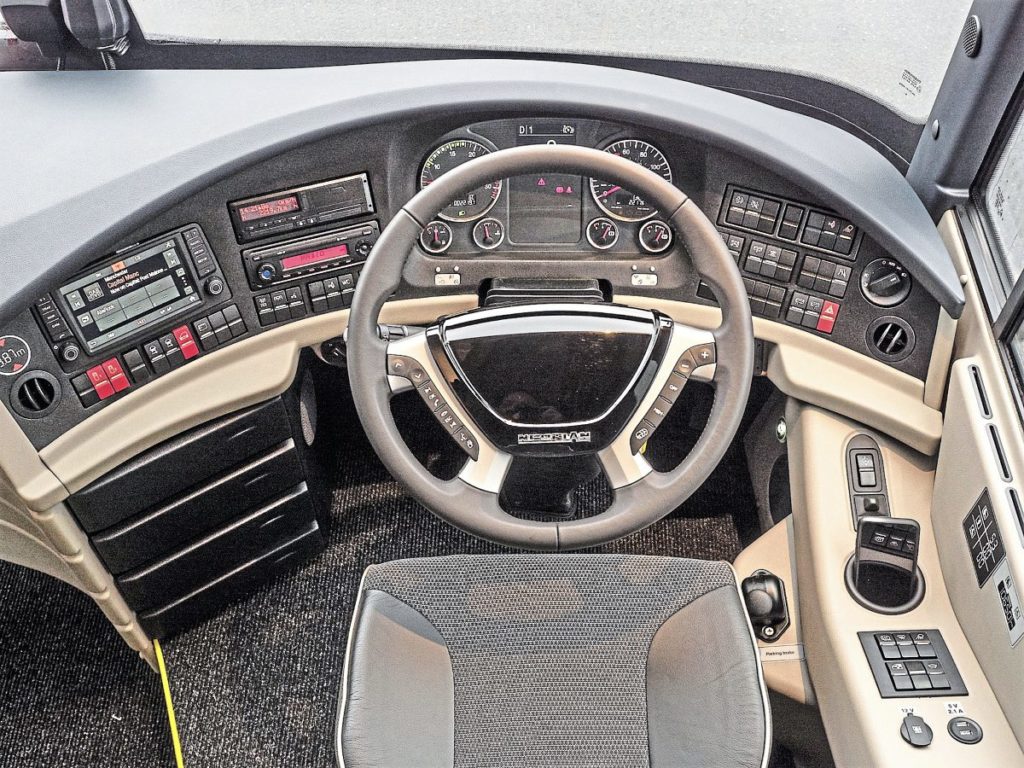
The dashboard is close to perfect, the central binnacle clearly in view for the driver and most controls required on the move within easy reach
“It gives the impression you are sitting in the seat, not on it,” he said, adding that the view is very good, even though – in common with so many coaches – the mirrors are right on the edge of the swept area of the wipers. On the test day, the wipers got a really good work-out…
“The steering feels really good…It’s a little on the heavy side, but I prefer that to over-powered, vague steering.”
Putting the ZF EcoLife in gear via the turn switch set to the lower left of the dash immediately revealed how urgently the coach wanted to pull away: “This coach waits for nobody,” said the test driver. The torquey engine delivers a fair bit of power even at tickover, so the brake needs to be released gently to get a feel for this. We all know this gearbox to be among the best available, and it offered virtually seamless changes through all six ratios.
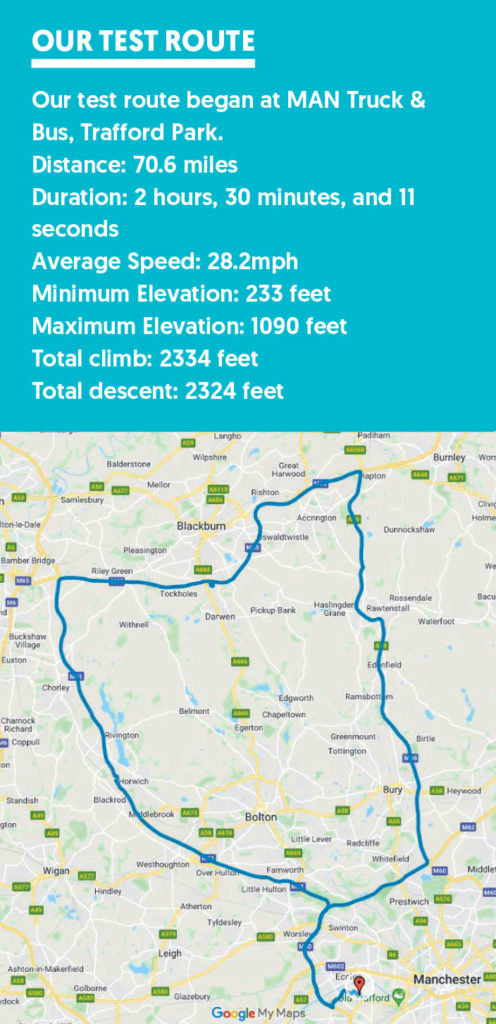 MAN has changed the axle ratio for this new series of Tourliners, taking advantage of the huge torque to keep the revs as low as possible. Tickover is around 600rpm and 100kph cruising is accomplished with just 1,150rpm on the clock. We’d boarded the coach with its delivery mileage, the on-board computer suggesting 12.7mpg. During the test, we certainly achieved close to 12mpg, which is pretty good for a new engine.
MAN has changed the axle ratio for this new series of Tourliners, taking advantage of the huge torque to keep the revs as low as possible. Tickover is around 600rpm and 100kph cruising is accomplished with just 1,150rpm on the clock. We’d boarded the coach with its delivery mileage, the on-board computer suggesting 12.7mpg. During the test, we certainly achieved close to 12mpg, which is pretty good for a new engine.
“The steering feels really good,” said the coach Stig. “It’s a little on the heavy side, but I prefer that to over-powered, vague steering.” Out on the open road, the Tourliner exhibited absolutely impeccable manners: “This really is a very sure-footed coach,” said the driver. “It sits where you want it, and I’m not having to make many steering corrections at all. It’s very relaxing to drive.”
Storm Jorge really gave us a proper blast as we climbed the edge of the Pennines, though. Even with very strong, gusty sidewinds, the coach flinched very little, and very predictably. It was also a demonstration of how impressively Neoplan has controlled wind noise; it was a whisper, never a roar.
“Under braking, the coach feels heavy,” said the driver. “The brakes are very effective, but you just get an impression of what they’re holding back.” As a passenger, I have to say that even potholes did not translate into interior noise, and there was no suspension shudder, which has been noticeable in some test vehicles.
Noise-wise, the Tourliner remains as good as it ever was. At the centre door position, passengers get a little more road noise and the only other place that shows anything other than near-silence is the rear seats, where the engine’s rumble is evident but not intrusive. There was absolutely no transmission whine.
In the lashing rain to which the photos bear witness, we used a services on our 70-mile route to take pictures. Exiting required a three-point turn, or so we thought, but the Tourliner made a good fist of it in one turn, demonstrating an impressively small turning circle.
Verdict
 We liked the 13m Tourliner we tested last year, and we liked this 12.1m two-axle just as much.
We liked the 13m Tourliner we tested last year, and we liked this 12.1m two-axle just as much.
Neoplan has tweaked this coach rather than facelifted it, and all of the tweaks have been worthwhile. It remains a very well assembled vehicle, devoid of foibles and rattles, and the driveline combination is a winner. Above all, it drives exceptionally well and has the lack of outward complexity which will allow any driver to climb aboard and work it all out in seconds.
The elephant in the room is the MAN engine which, in Euro V, proved problematic for owners. There has to come a point at which operators make decisions based on today, not yesterday. The D26 was quiet, seemed fuel efficient and combined with EcoLife delivers a great package. It comes with a four-year warranty for the driveline, three years for the whole package (based on a 100,000km limit). This includes engine oil change, fuel filter, oil filter and valve clearance services for the duration of warranty.
Assuming 51 seats is enough for you, this 12.1m Tourliner promises to be a durable workhorse of a tourer with many features your passengers will love, too. Casting all other prejudices aside, it will pass any test drive with flying colours.